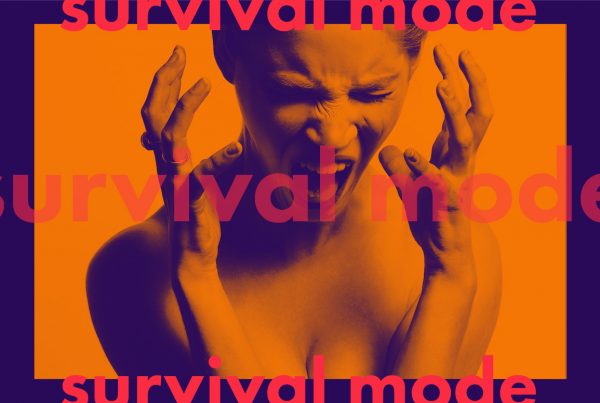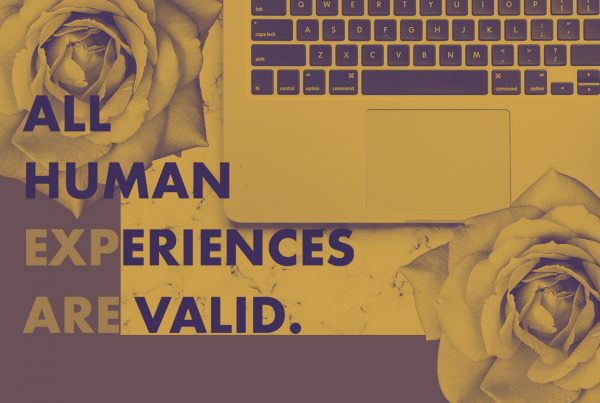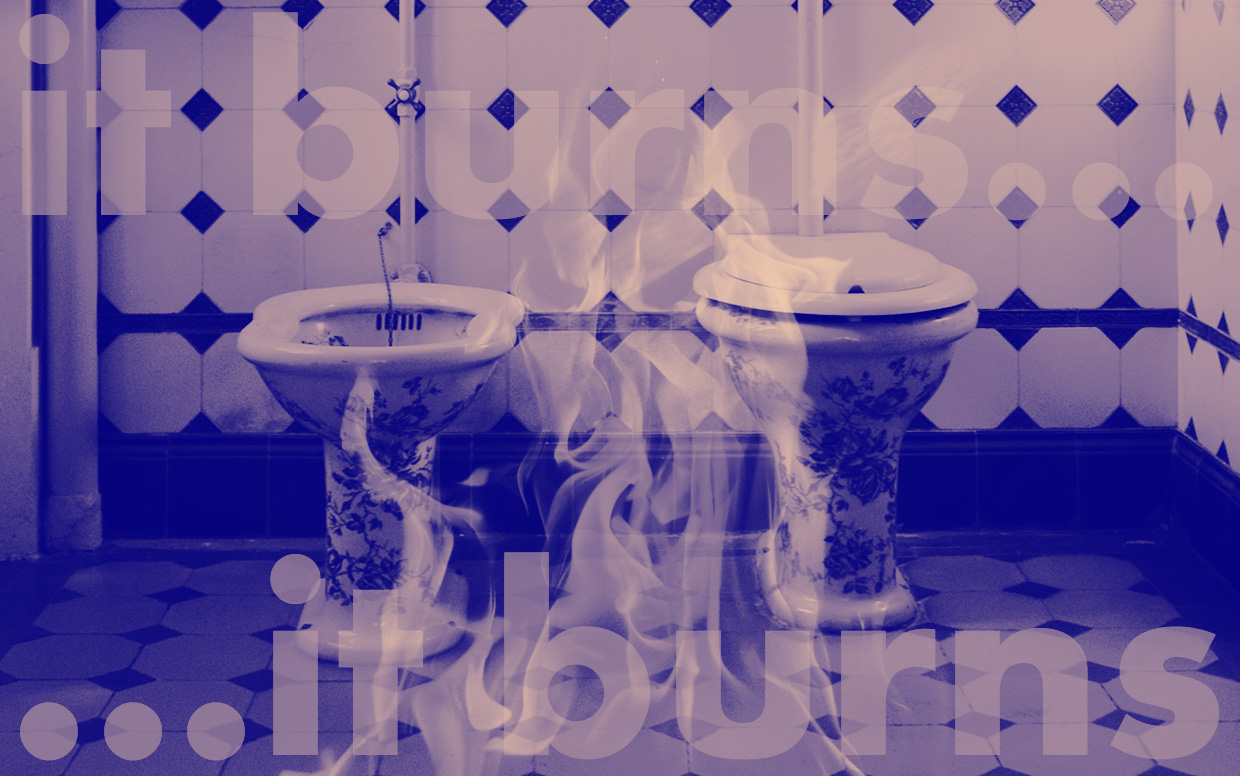You probably already know that there are barely any quality vulvodynia resources out there. Especially if you are looking for something that is tailored to patients – not health practitioners or researchers.
My goal in gathering the following list (which is not exhaustive) is to present you with resources that are patient-centered – meaning that the information used actually SERVES YOU. Not exclusively your health practitioner.
My experience served me as a guide – as I know what I have been looking for since 2001 when I started to suffer from vulvodynia.
In Part 1 here, I have mainly focused on websites that belong to associations and organizations that deal with vulvodynia.
In Part 2 upcoming, I will focus mainly on vulvodynia related professional and personal blogs, forums and Facebook groups.
Please let me know if you find the following list useful and if you know of any other resources that are worth mentioning here.
ENGLISH WEBSITES
#1: NVA - National Vulvodynia Association
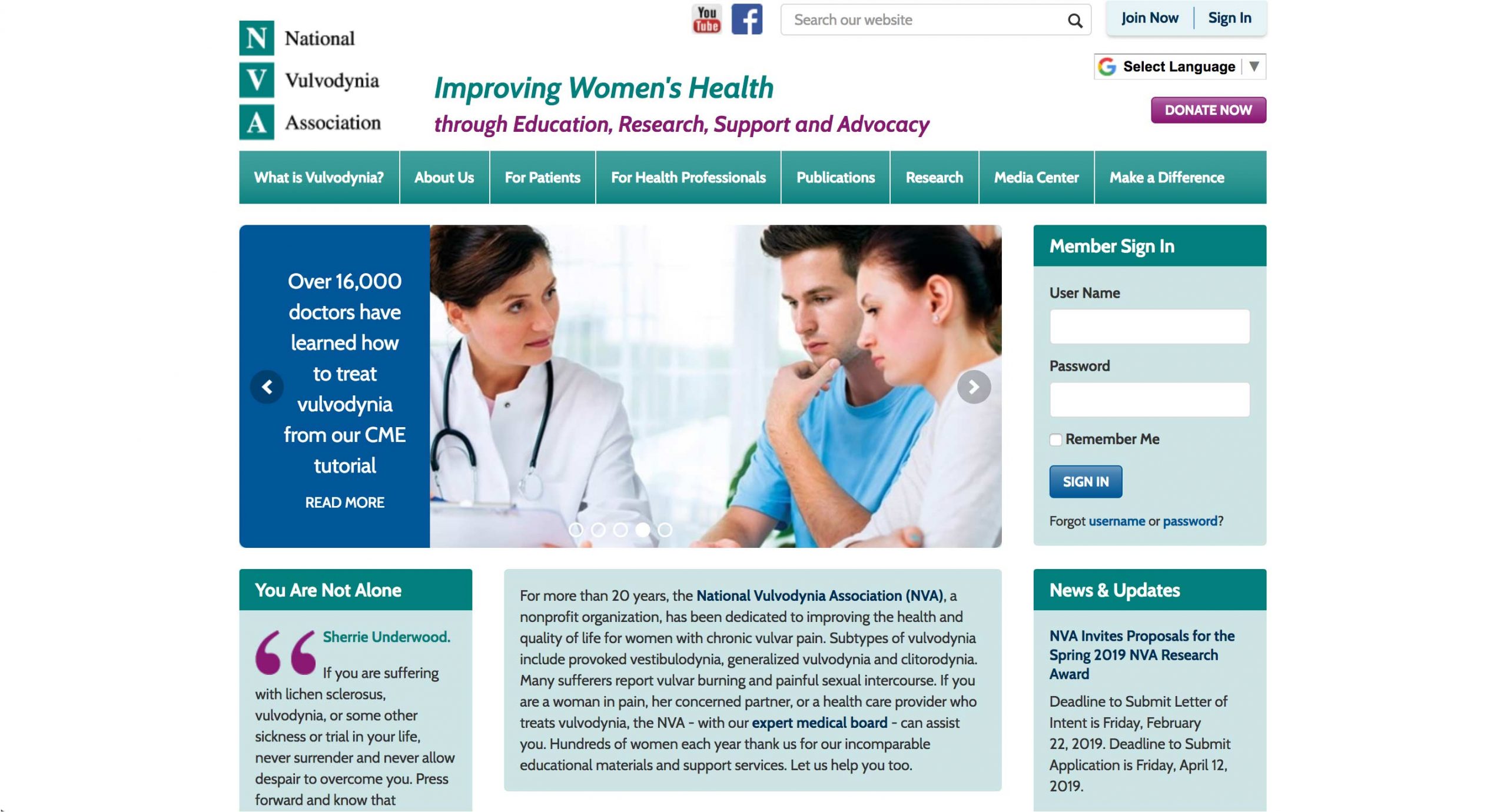
A staple resource for vulvodynia from the US. Established in 1994, NVA is a nonprofit organization in which one of its main goals is to educate and improve the health and quality of life of women with vulvodynia (and also their loved ones).
The free version (without membership) will give you access to essential information about vulvodynia (causes, treatments, diagnosis, self-help tips, etc.), a list of support groups, patient stories and access to medical journal articles and research.
If you pay a tax-deductible yearly membership fee of $45, you will get access to more exclusive information like educational booklets, full patient tutorials, plus a list of health practitioners that deal with vulvodynia.
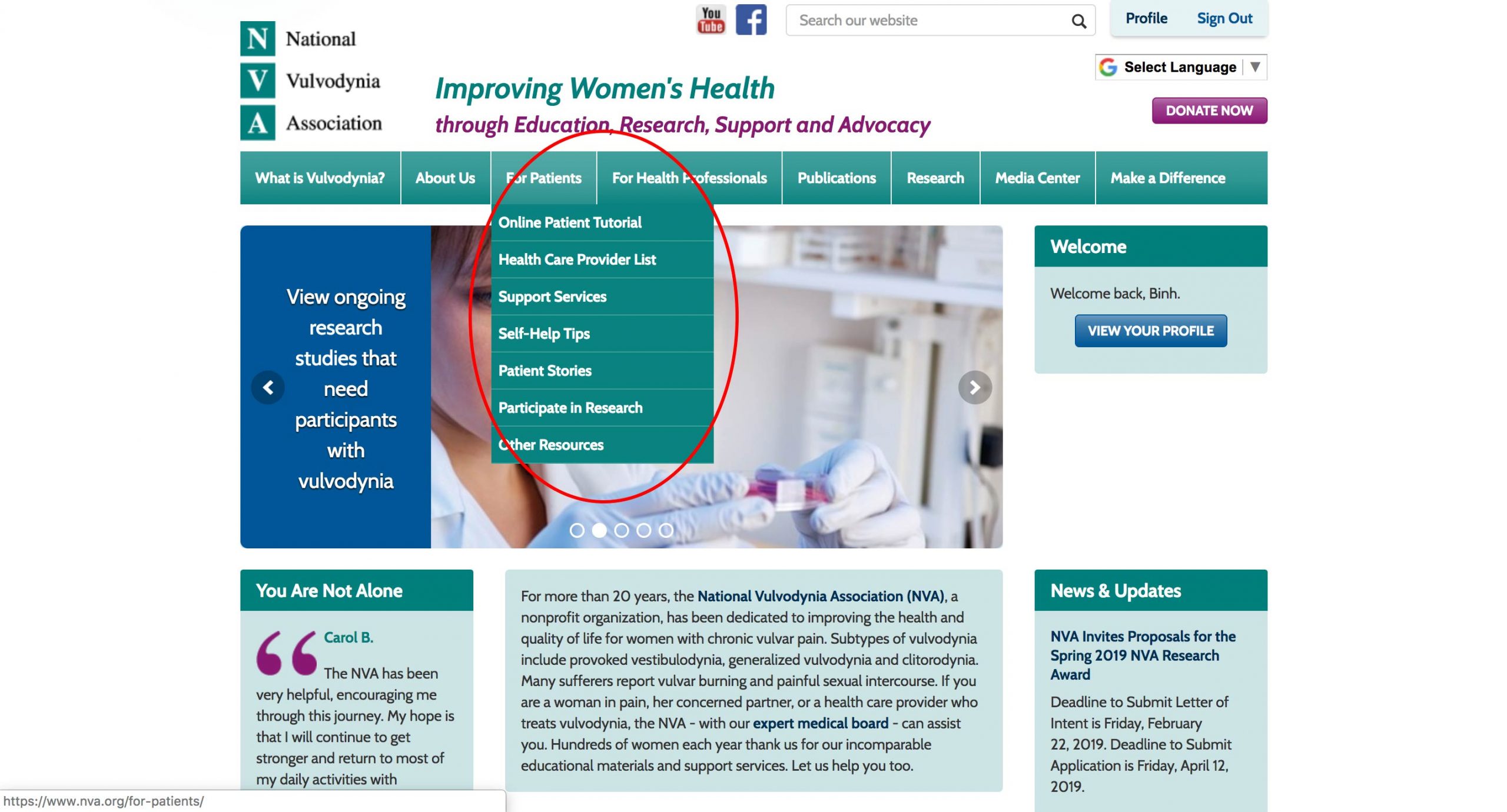
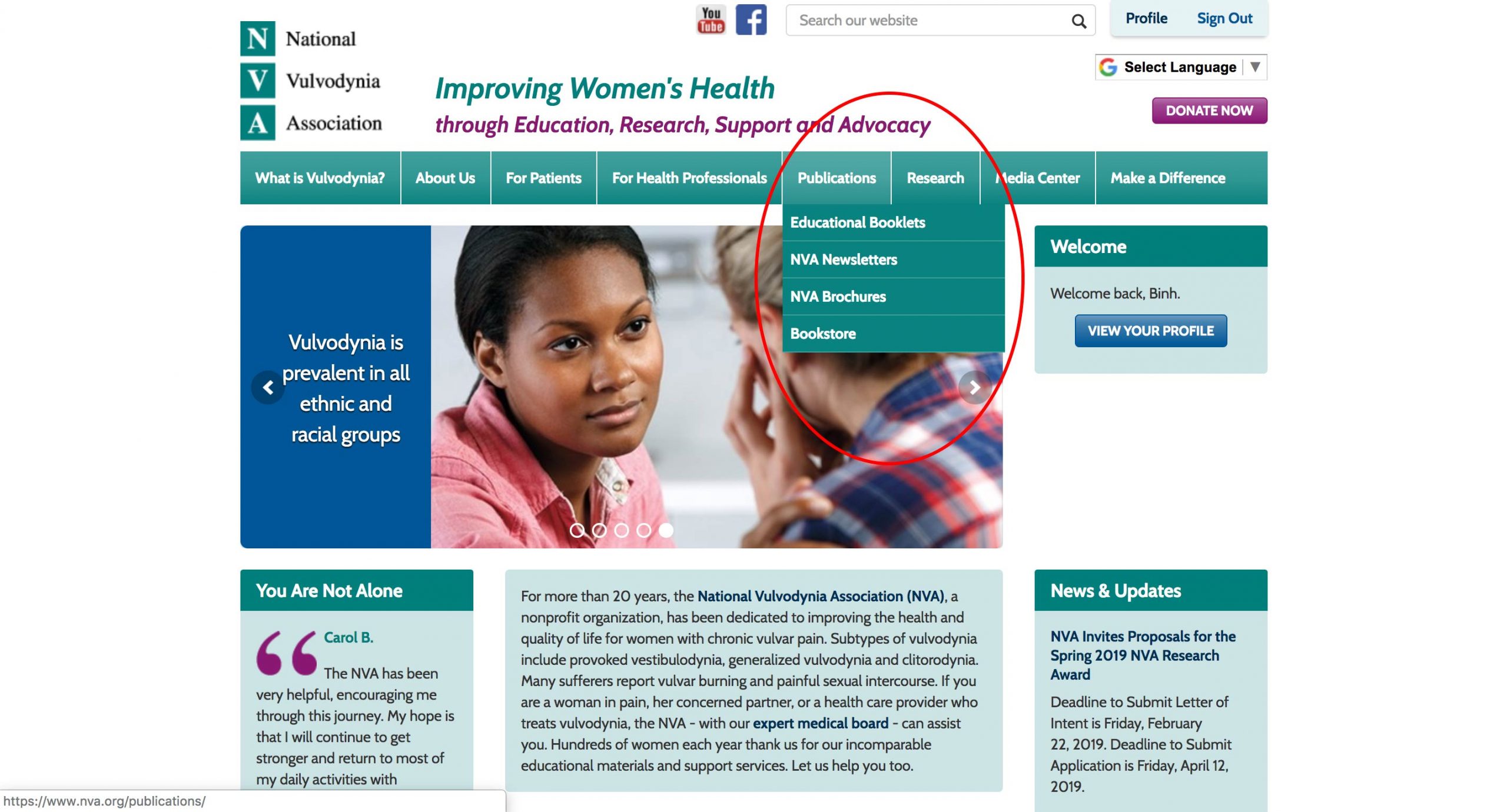
You will find most of the paid information under the “For Patients” and “Publications” sections. The rest of the information is accessible for free.
#2: Vulva Pain Society
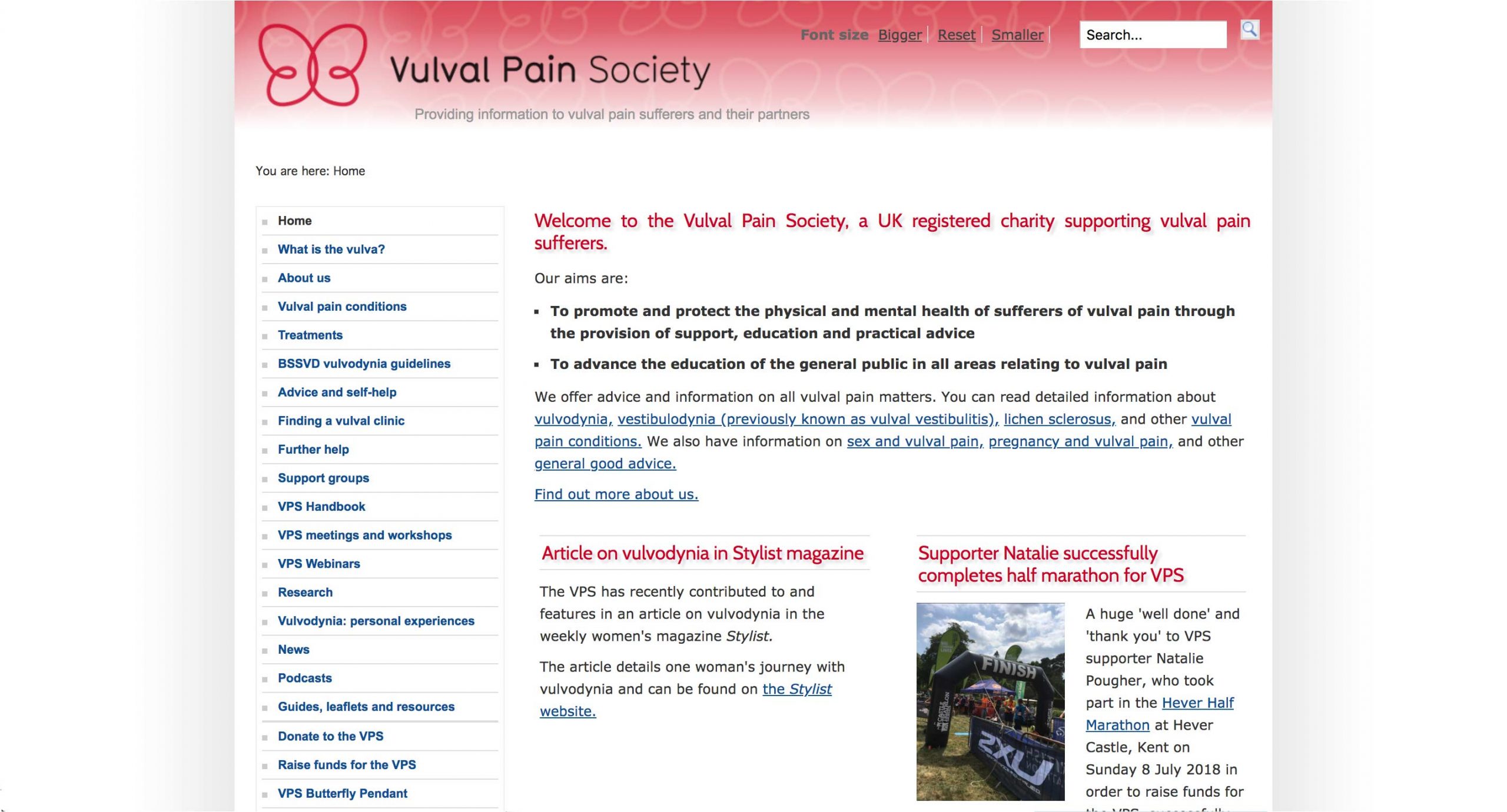
Another staple online resource for vulvar conditions, based in the UK.
The Vulval Pain Society (VPS) was established in 1996 as a place to educate and support women who suffer from vulvar pain – especially from vulvodynia and vestibulodynia. It’s a UK charity, therefore, some information might not be relevant to other countries.
The VPS website is packed with useful and free information from vulva anatomy, vulvar pain conditions and available treatments to a list of vulvar clinics, research, podcasts, personal stories and more.
The information tends to be nested, which means that you will need to click around to discover all parts of the website.
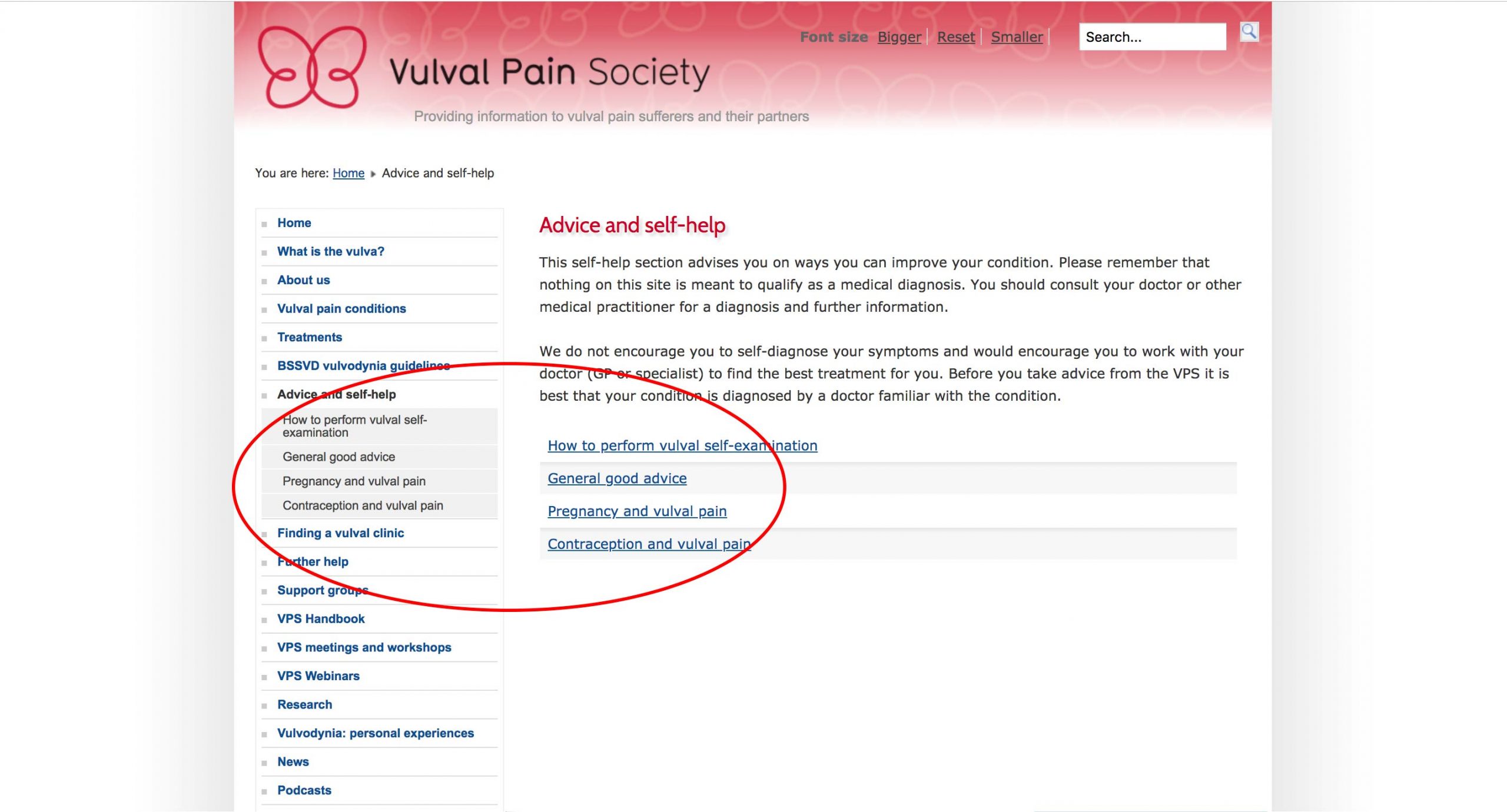
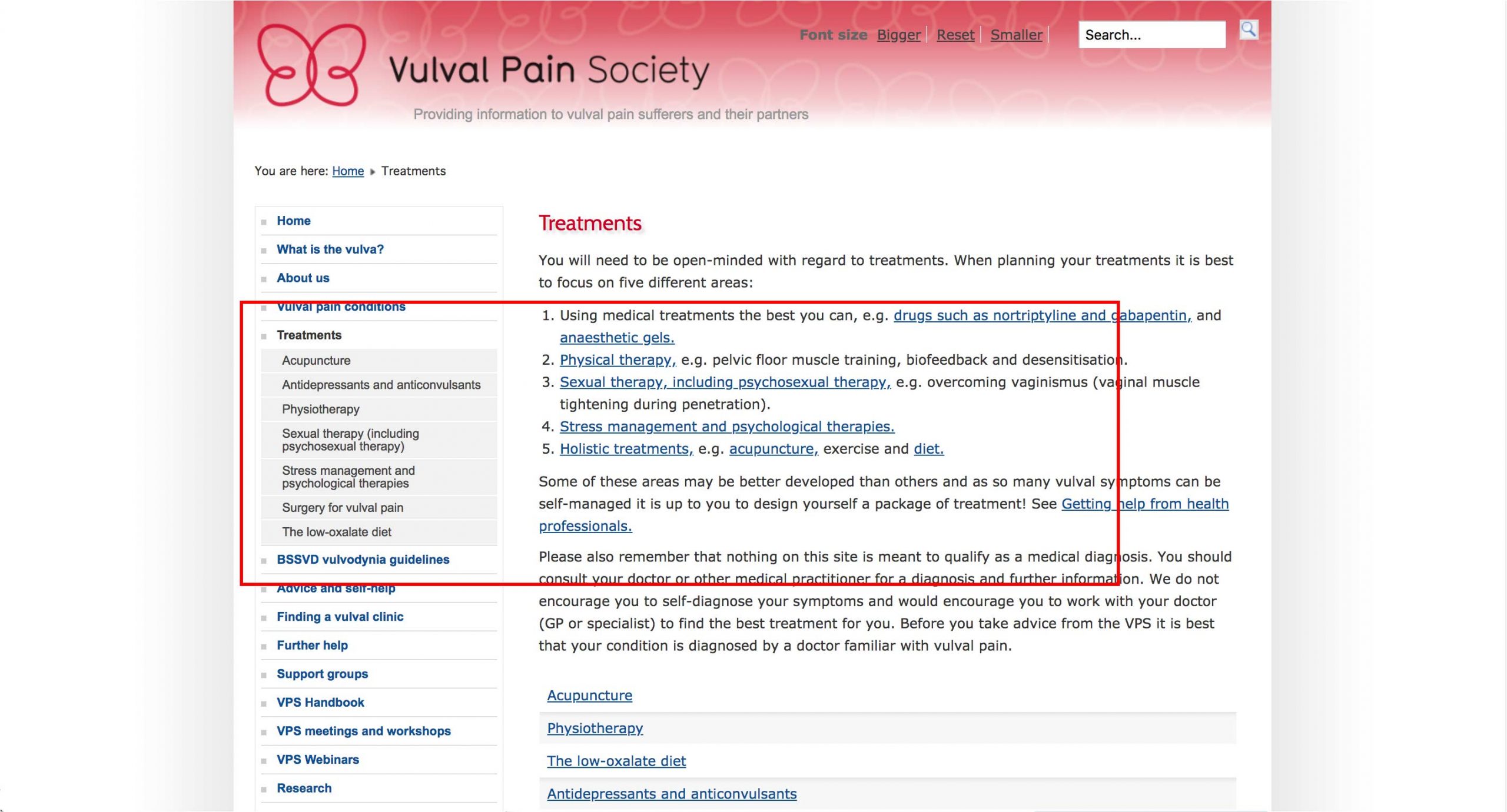
On the left – sometimes confusing “double navigation” containing the same information. On the right – nested information with internal and external links.
#3: ISSVD - International Society for the Study of Vulvovaginal Diseases
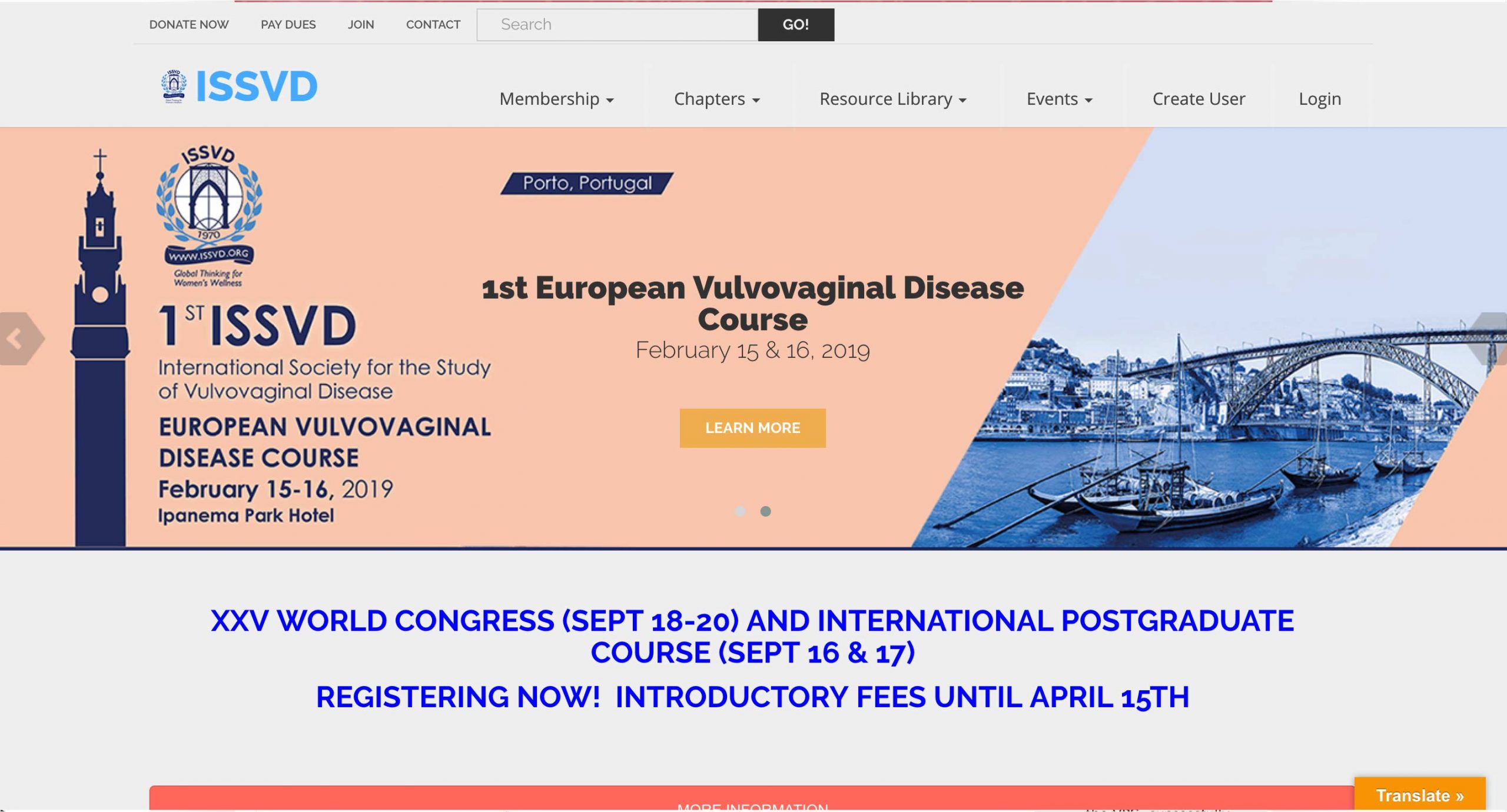
ISSVD was founded in 1970, as a society dedicated to health professionals who deal with vulvovaginal diseases. Most information on this website is available as part of a paid membership.
However, as a patient, you can find free information about some vulvovaginal conditions (like vaginismus, generalized unprovoked vulvodynia, vulva psoriasis, vulva cancer and more) in the non-member section.
Most info is provided in English and Spanish.

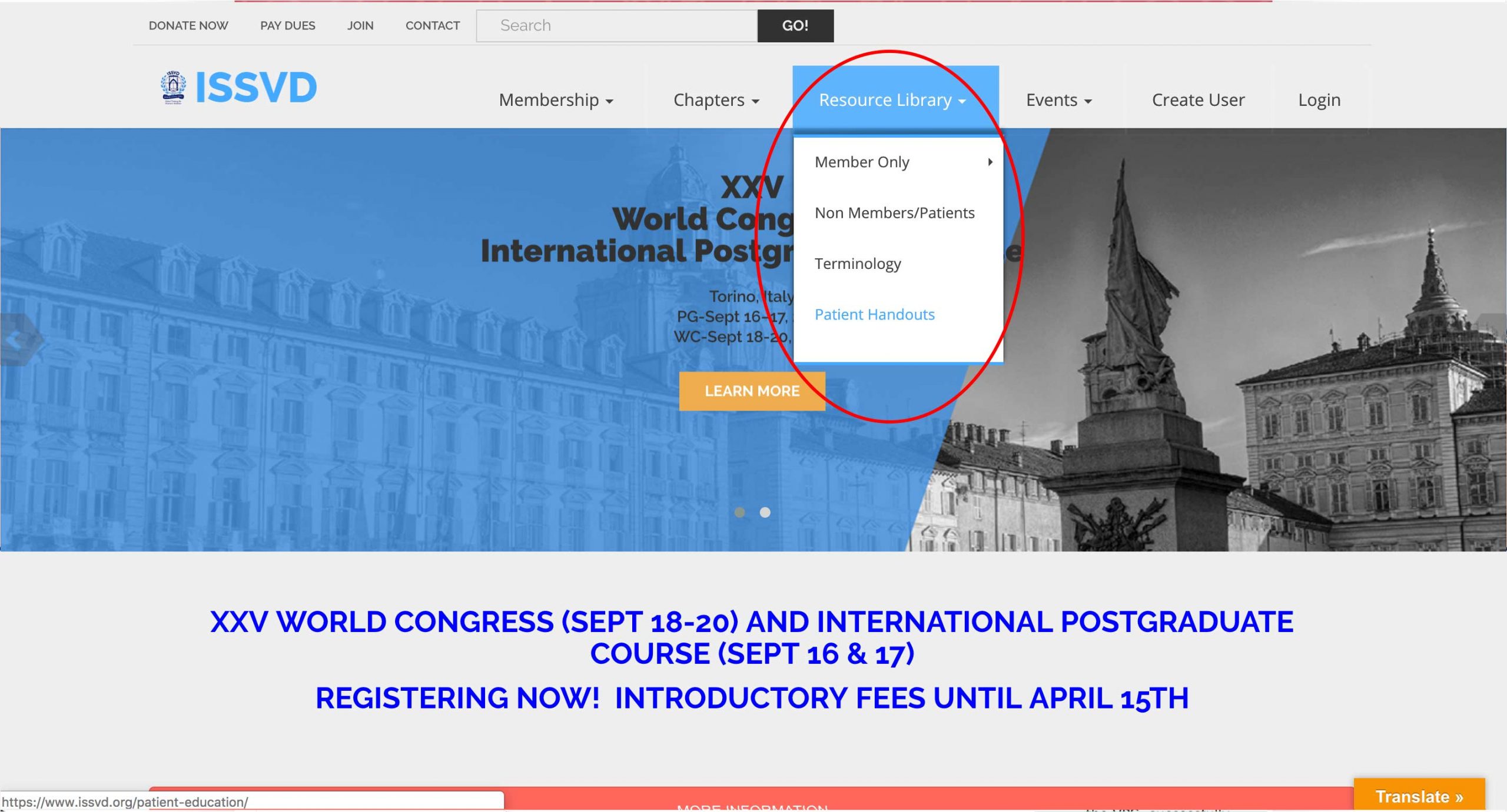
Free information is provided under “Resource Library” > “Non-Members/Patients” and “Patient Handouts” sections.
#4: The VP Foundation

The VP (Vulvar Pain) Foundation was established in 1992 in the US and its main goal is to help women suffering from vulvar pain conditions including vulvodynia, through scientific research.
VPF’s main approach focuses on an anti-oxalate diet (along with calcium citrate without Vit D) treatment and its effectiveness when battling vulvar pain conditions.
The free version of the website, unfortunately, doesn’t contain any valuable information. You can purchase a $45 yearly membership that will allow you to get discounts on educational resources, and participate in VPF’s support network, groups, and research studies.
If you are truly interested in the anti-oxalate diet, then this website should be a good fit for you.
#5: Vaginismus.com
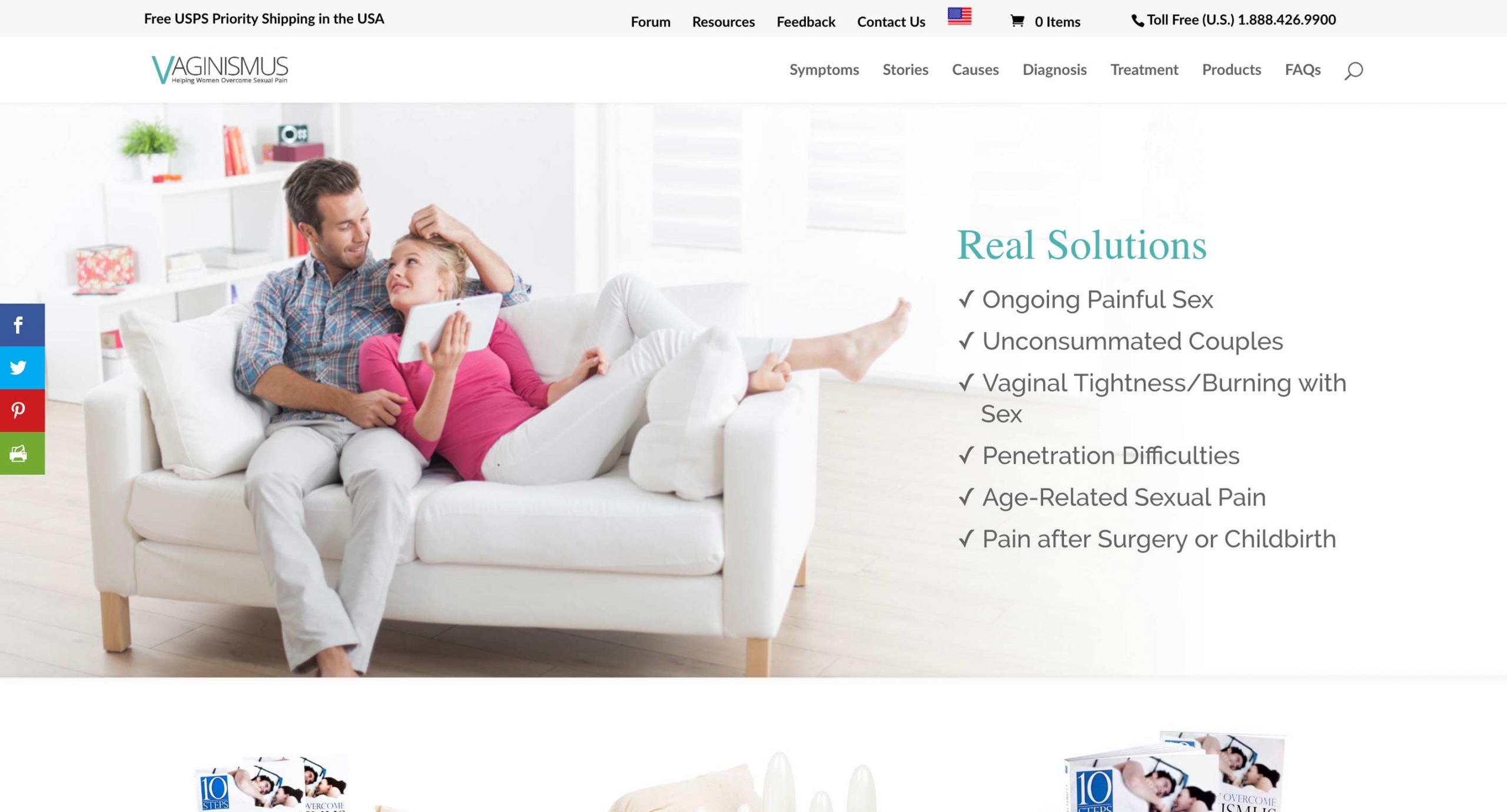
For many people suffering from vulvodynia, especially from vulvar vestibulitis, vaginismus is an accompanying problem.
Initially, I was skeptical about the educational level of this website, because at first glance vaginismum.com is mainly product and sales oriented.
However, the shared content about vaginismus symptoms, causes, treatments, diagnosis is very informative, easily understandable and free. The website is easy to navigate and offers access to a forum for anyone who purchases the vaginismum.com program.
#6: Vaginismus Awareness
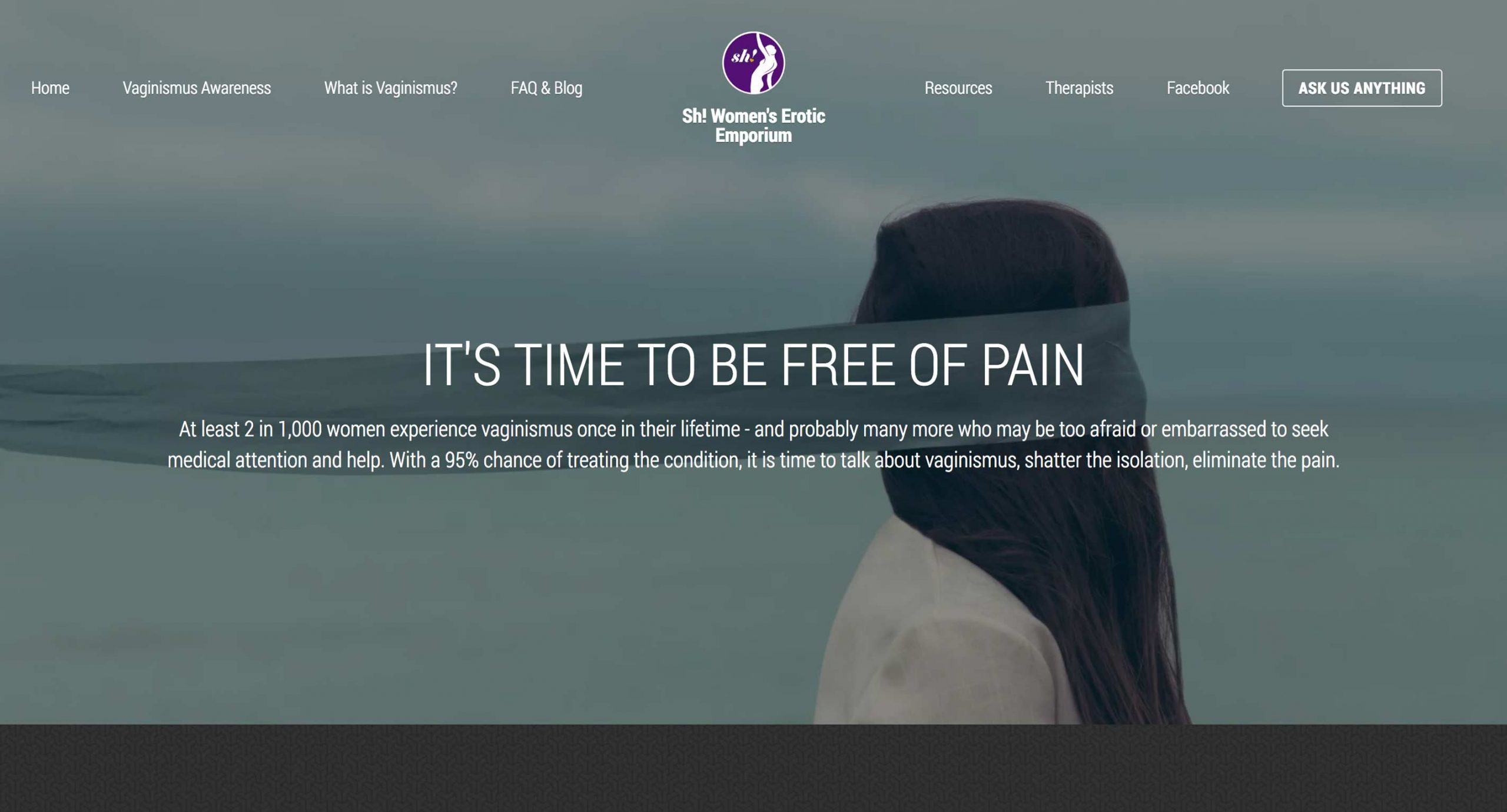
Vaginismus Awareness is not so informative like the previous resource. However, in the vulva-land, there are not so many options to choose from.
Information gathered on this UK website is minimal, with a tiny blog section without any visible topic divisions (you will need to read through the posts to get some specific information out of it).
However, you might find the resource and therapist sections useful.
#7: My Vagina
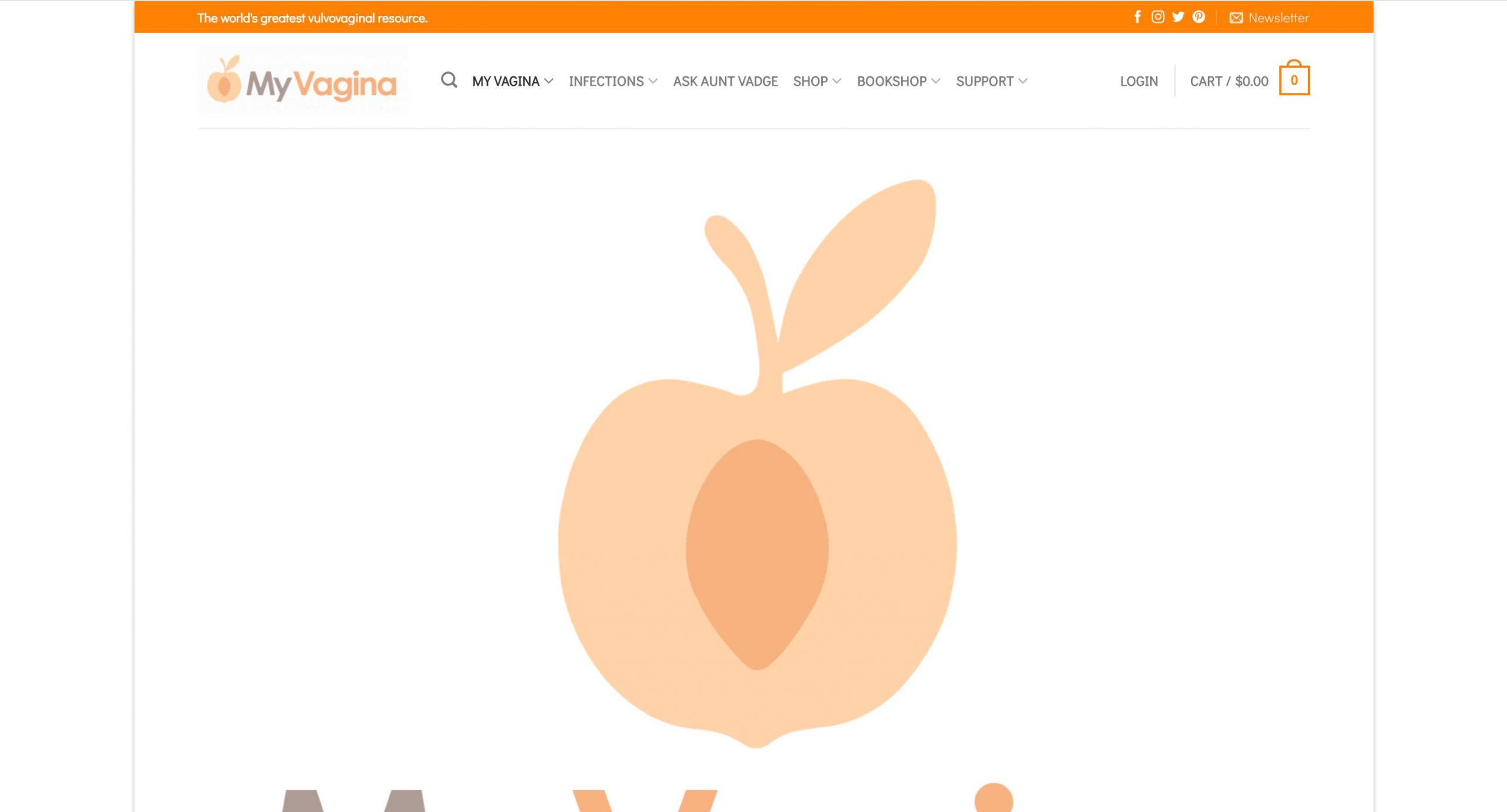
On this Australian website, you can find general information about almost any vulvovaginal condition, including vulvodynia.
They also have a section for questions called “Aunt Vadge,” where you can ask direct questions, along with a support section available after signing in.
The website is not the easiest to navigate (I got lost a few times), so if you want to look for a specific condition (including vulvodynia), use their “search field” on the top navigation.
#8: Pelvic Floor First
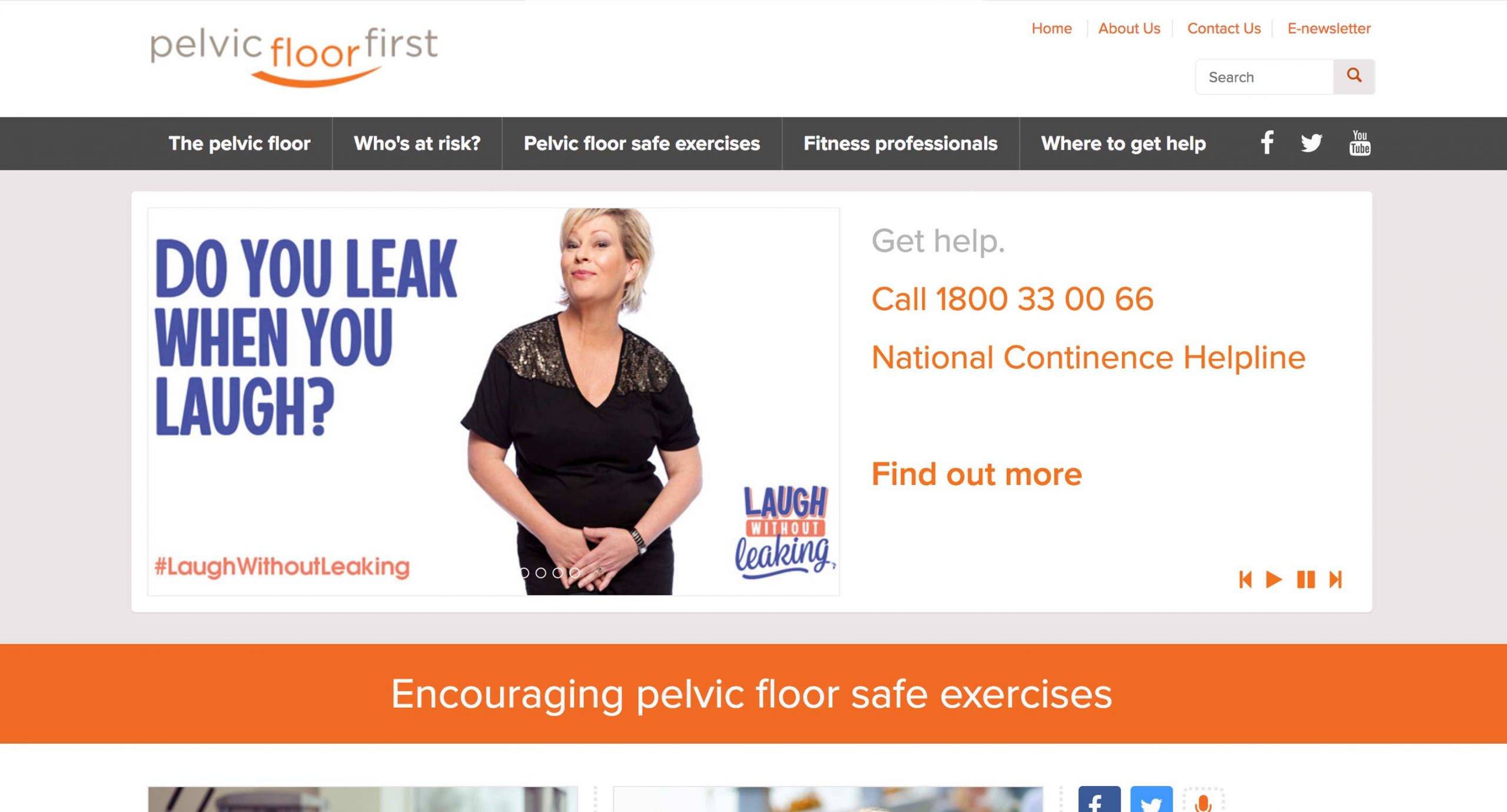
Vulvodynia is often related to other pelvic floor problems. That is why a lot of vulvodynia sufferers benefit greatly from pelvic floor therapy.
Pelvic Floor First is an Australian website, supported by the Australian Government.
The PFF website is a good source of entry-level information including initial guidelines on how to spot pelvic problems, who might be at risk, how to exercise this group of muscles or which type of exercises are safe for the pelvic floor.
The website is easy to navigate with logically grouped information. Additionally, almost every section is filled with topic-related materials (like leaflets or external links).
The website is not linked to any particular female pelvic floor conditions.
#9: Pelvic Health Solutions
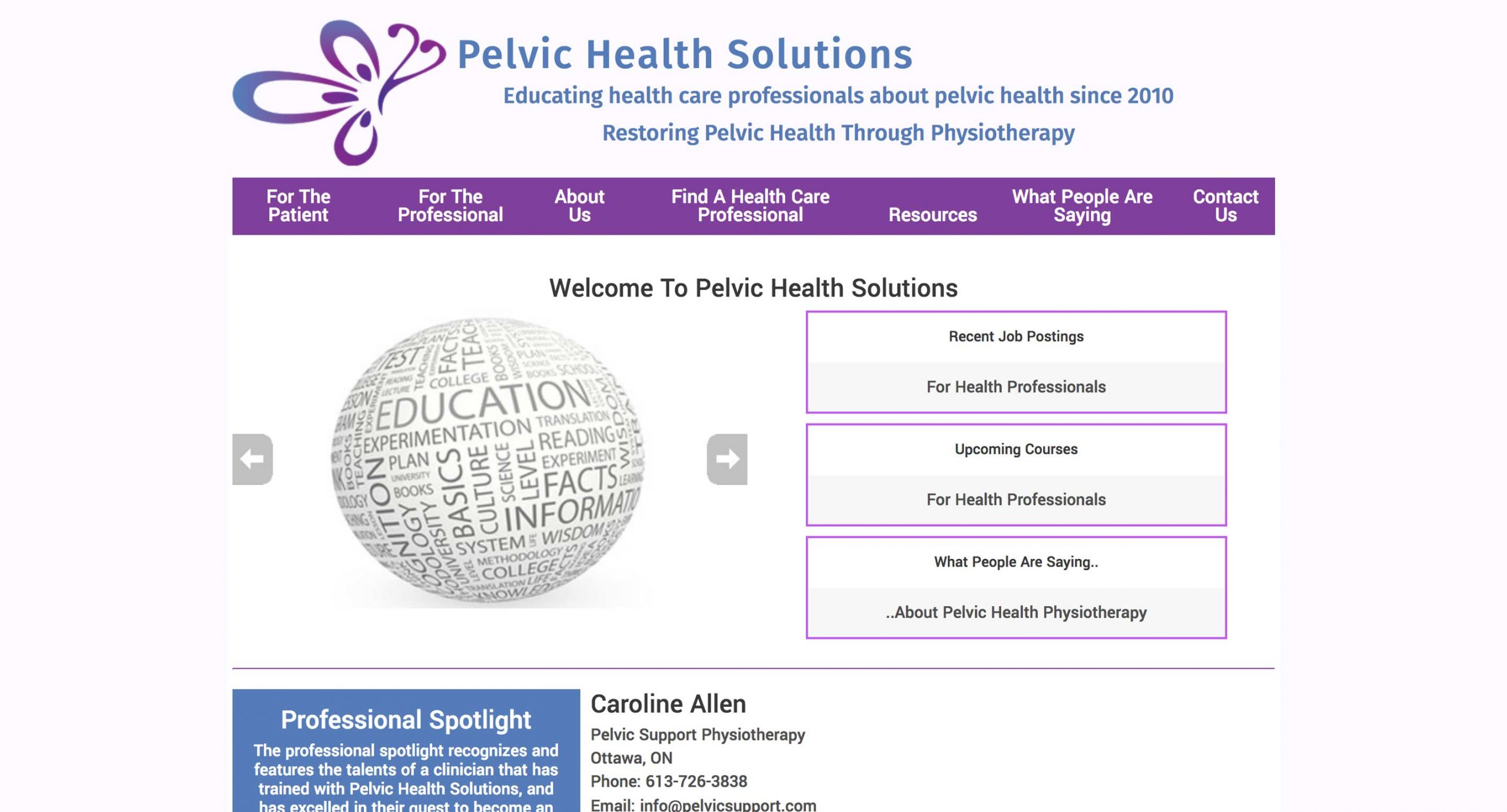
Established in 2010 in Canada, PHS is mainly a teaching company providing continuing education courses for a variety of practitioners.
However, the content available for patients is informative and free.
On the website, you can find basic information about pelvic floor conditions (like vulvodynia, vaginismus, dyspareunia, pudendal nerve irritation or interstitial cystitis) and pelvic floor physiotherapy.
The website also provides you with a free physiotherapist finder for Canada.
#10: HOPE - Health Organization for Pudendal Education
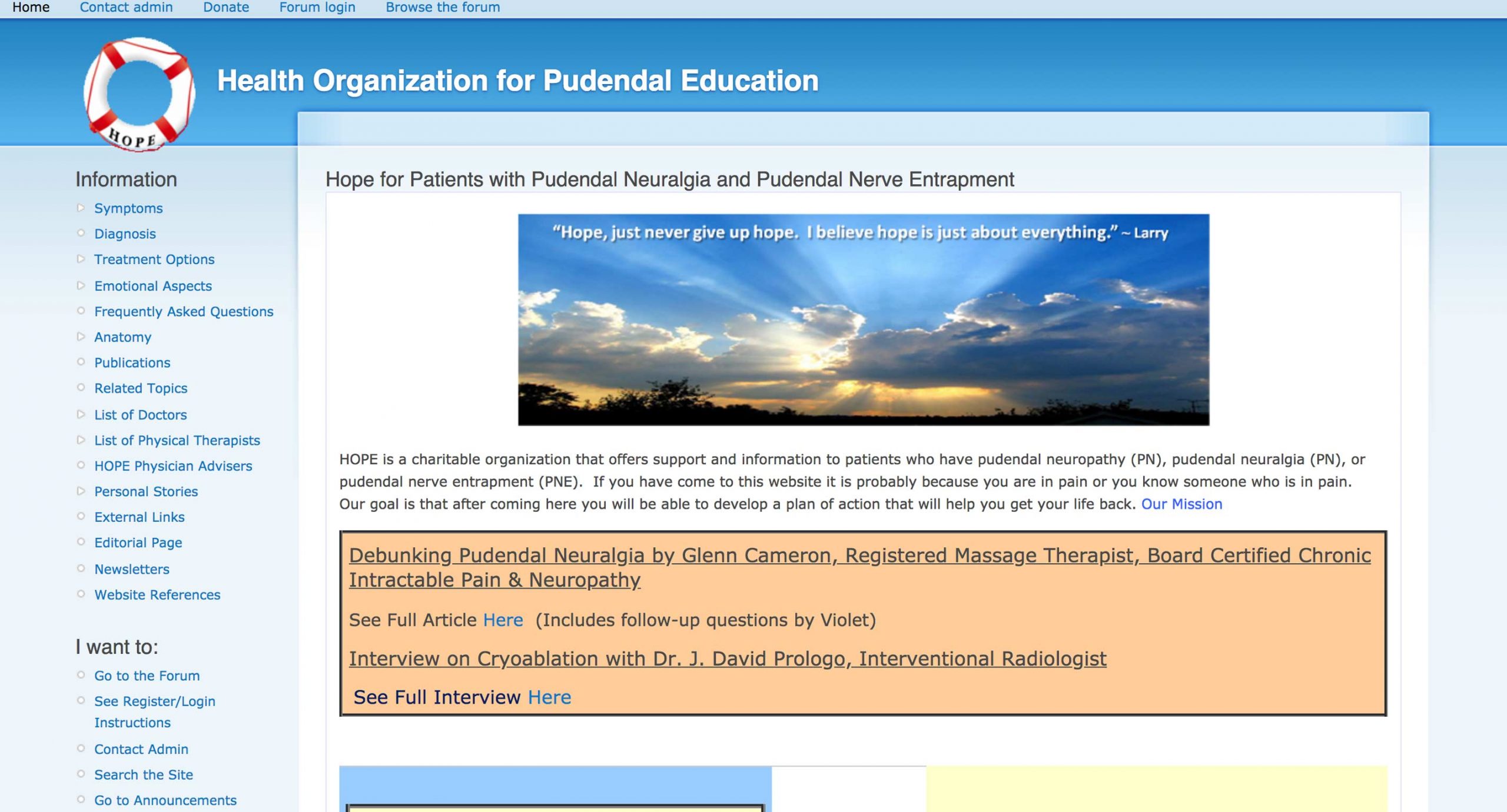
As vulvodynia doesn’t have a definitive cause, one of the possible culprits, often overlooked though, can be a problem with the pudendal nerve.
The HOPE website was last updated in 2014, however, it’s still considered one of the main resources for pudendal neuralgia and pudendal nerve entrapment.
The website is filled with logically organized, comprehensive information, ranging from symptoms, diagnosis, treatment options to FAQ, personal stories and an active forum.
#11: The Pelvic Pain Support Network
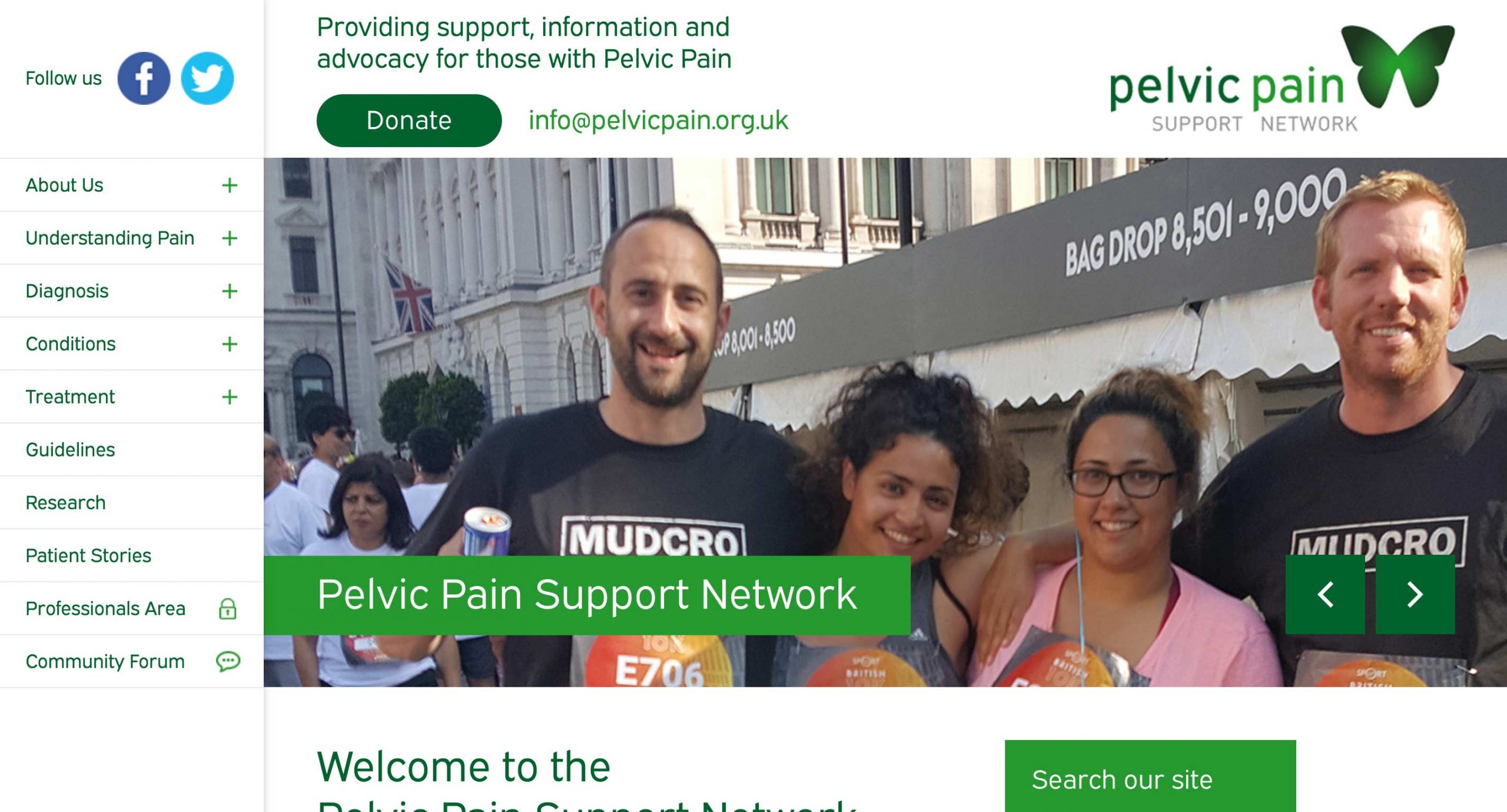
The Pelvic Pain Support Network is a patient-led charity, run entirely by volunteers.
“The PPSN provides support, information, and advocacy for those with pelvic pain, their families and carers.”
On the website, you can find general information about pelvic floor conditions (including vulvar pain), diagnosis, treatment, guidelines, personal stories, and an active community forum.
#12: PubMed
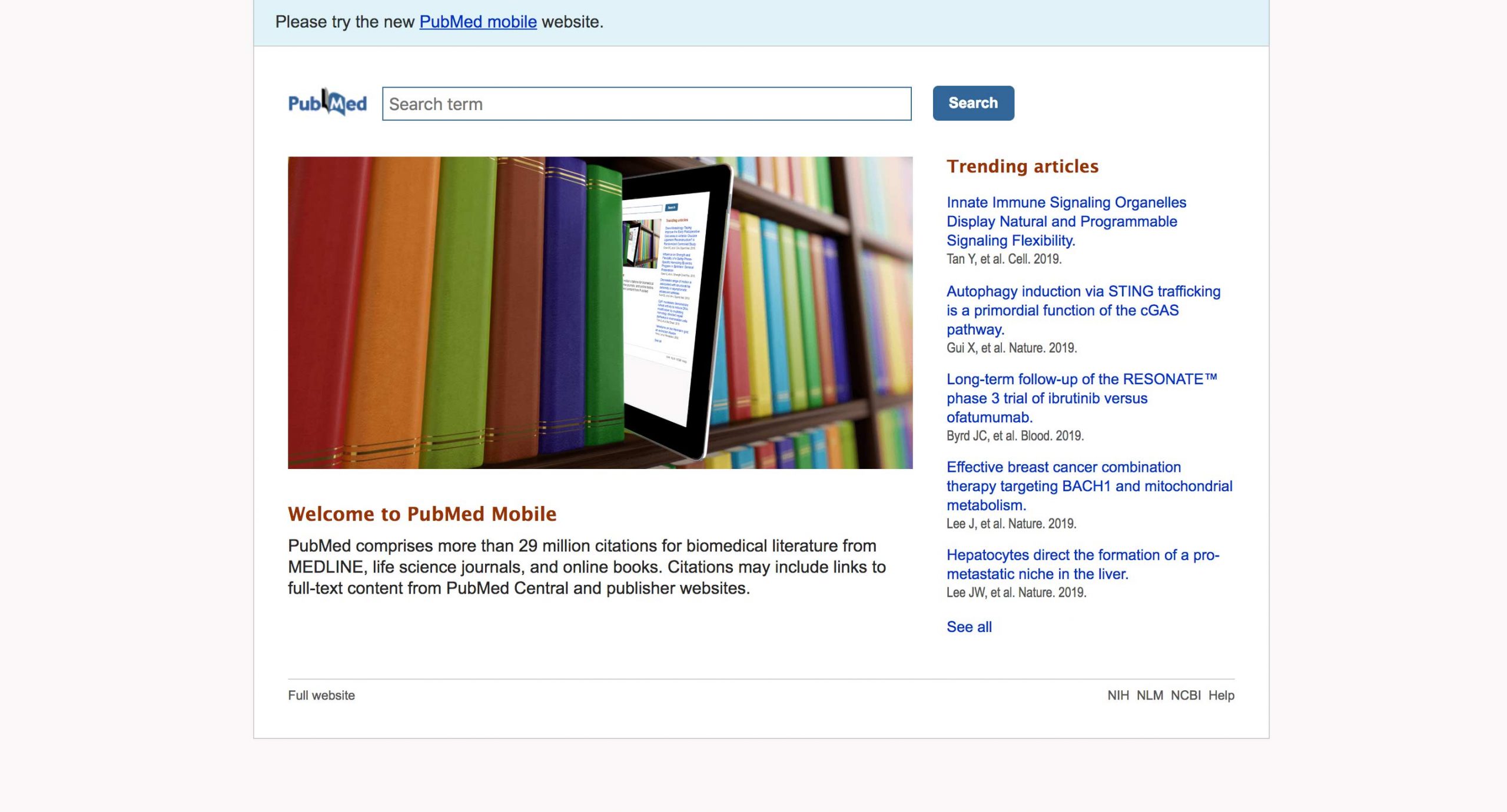
PubMed is a peer-reviewed article database. It contains links to full articles and abstracts from peer-reviewed studies. You can find resources from “biomedical literature from MEDLINE, life science journals and online books.”
To find information regarding vulvodynia, simply search for it using the search box.
NON-ENGLISH WEBSITES
My research on non-English websites was not the easiest one, with Google translator as my only friend.
Most of these websites don’t have the greatest visuals and aren’t exactly mobile-friendly. Some of them are inactive, however, information provided can be still useful.
If you come across something interesting and worth sharing that I have missed while navigating through these websites, please don’t hesitate to contact me.
#13: Vestibulit (Swedish Website)
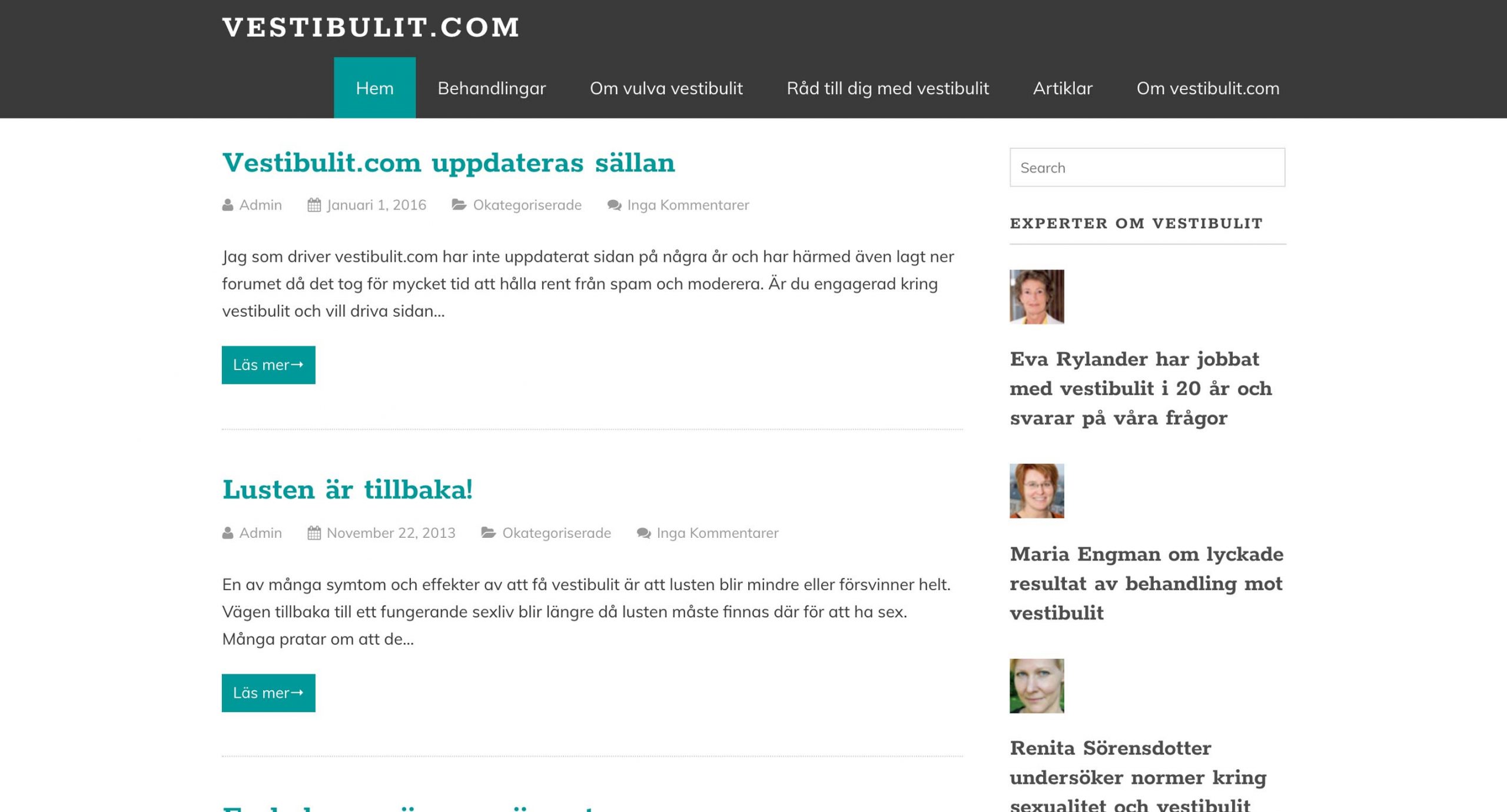
The website is inactive and it focuses mainly on information about vulvar vestibulitis including causes, treatments, patients stories, and several articles written by specialists.
#14: Vulvodynie (Swiss Website)
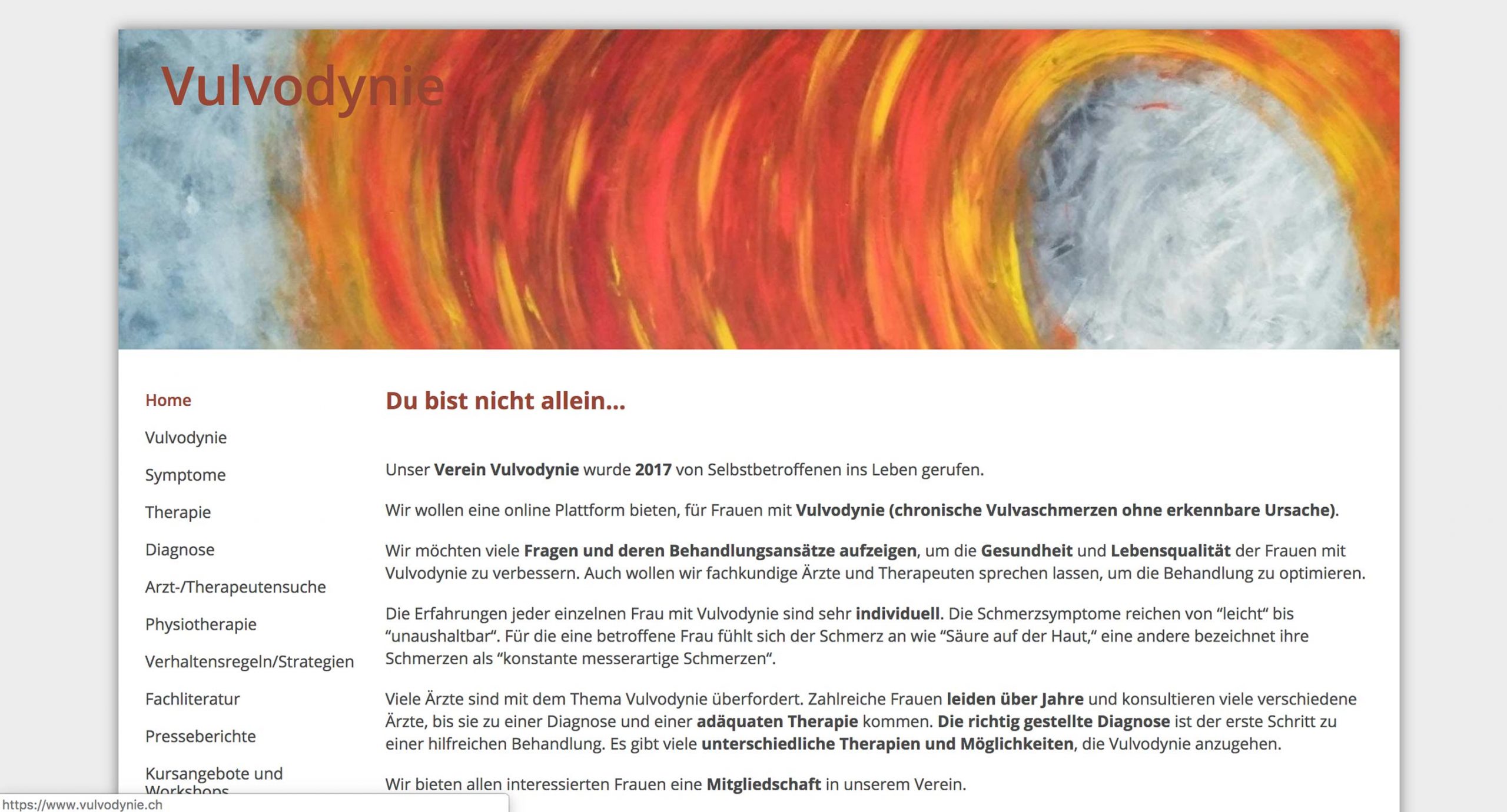
On the website, you can find key information about vulvodynia like symptoms, diagnosis, treatment options with daily tips and resources.
As a registered member, you can get access to a list of doctors, and the opportunity to take part in workshops and courses.
This association also covers Austria and Germany.
#15: Les Cles de Venus (French Website)
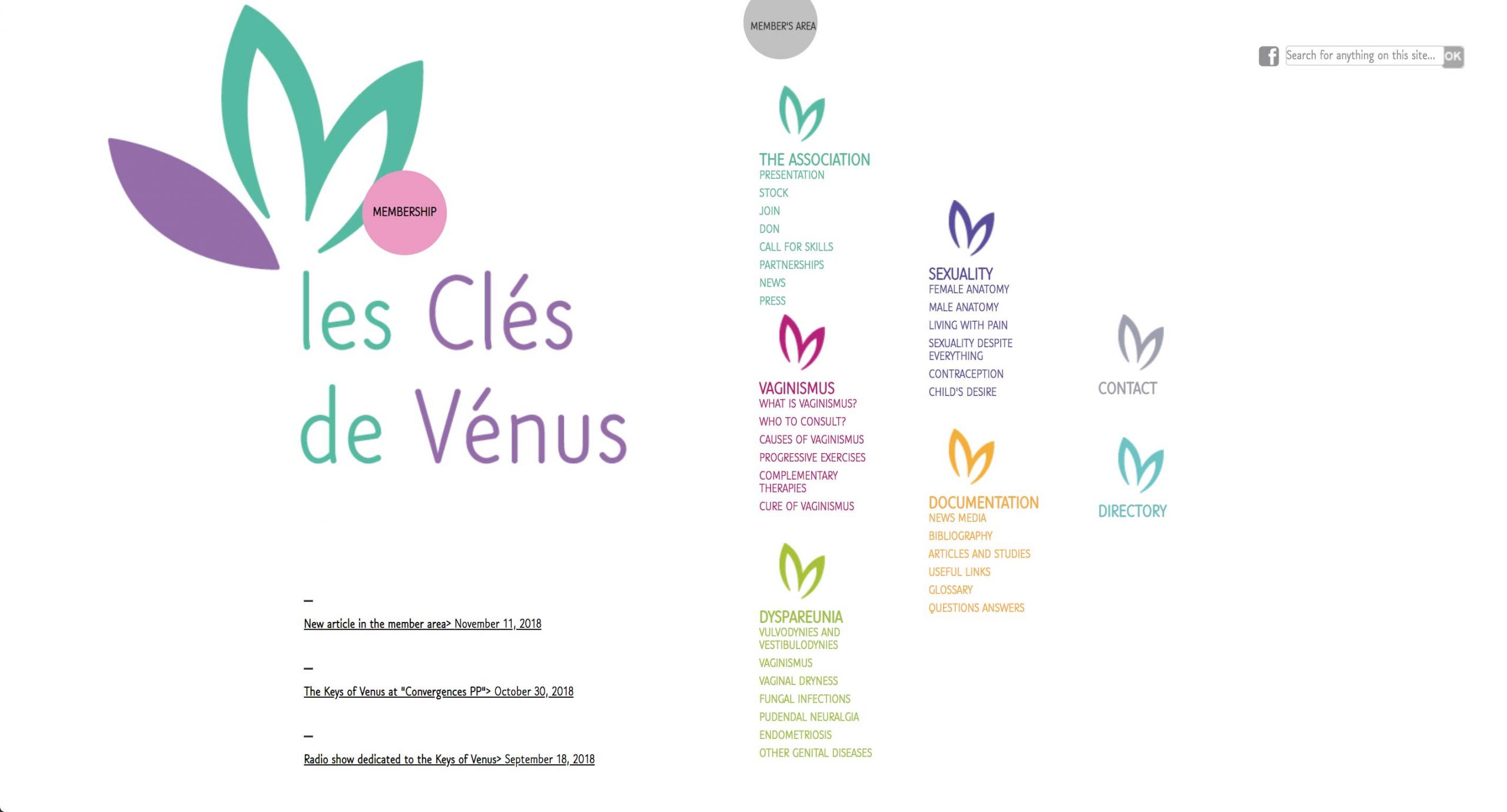
The website is a bit busy and not the easiest to navigate.
The free version contains essential information about different pelvic floor conditions including vulvodynia and vaginismus. A huge plus is the free directory of health practitioners from France, Belgium, Spain, and Switzerland.
The paid version (membership fee from 15-35 € per year) will give you access to reports, interviews with health practitioners and extra resources.
#16: Vulvodinia Punto Info (Italian Website)
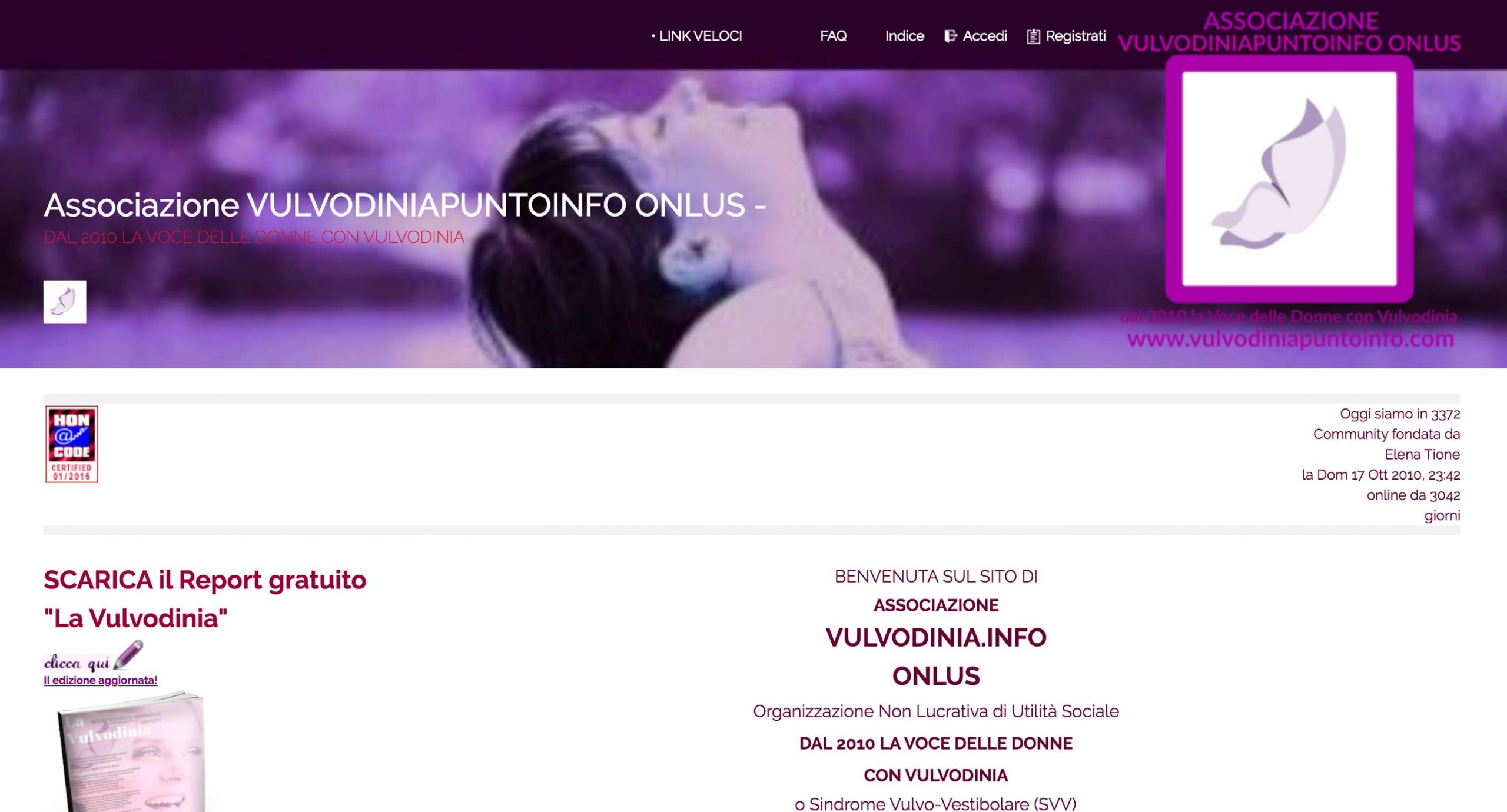
The website is very busy and quite challenging to search through. It contains, amongst other things, basic information about vulvodynia (and other pelvic floor conditions), success stories, resources, an FAQ and an active forum.
The VPI association itself seems to be very active, participating in TV programs and a petition to recognize vulvodynia as a pain condition in Italy.
You will need to click around to get a gist of how the website works.
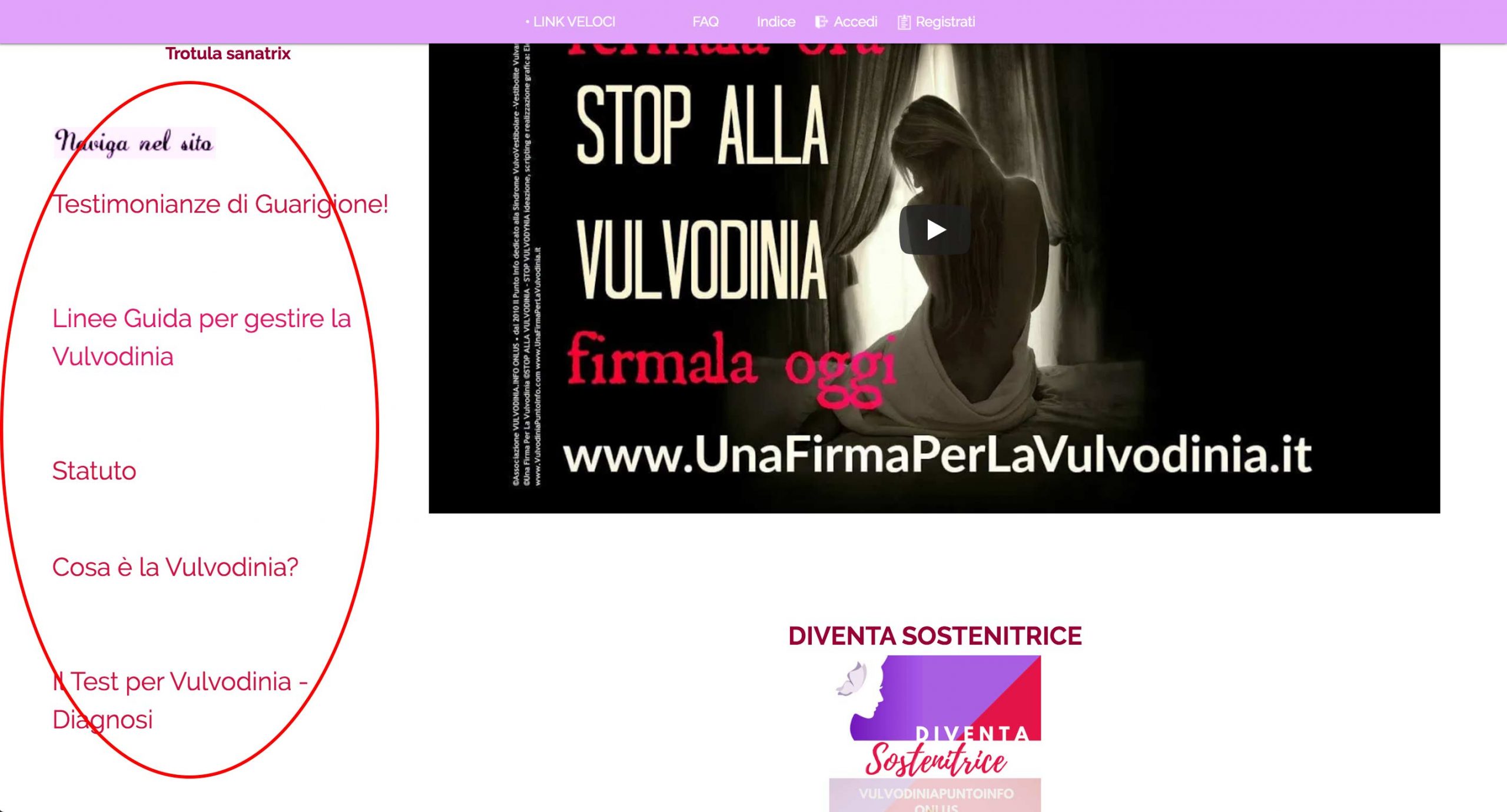
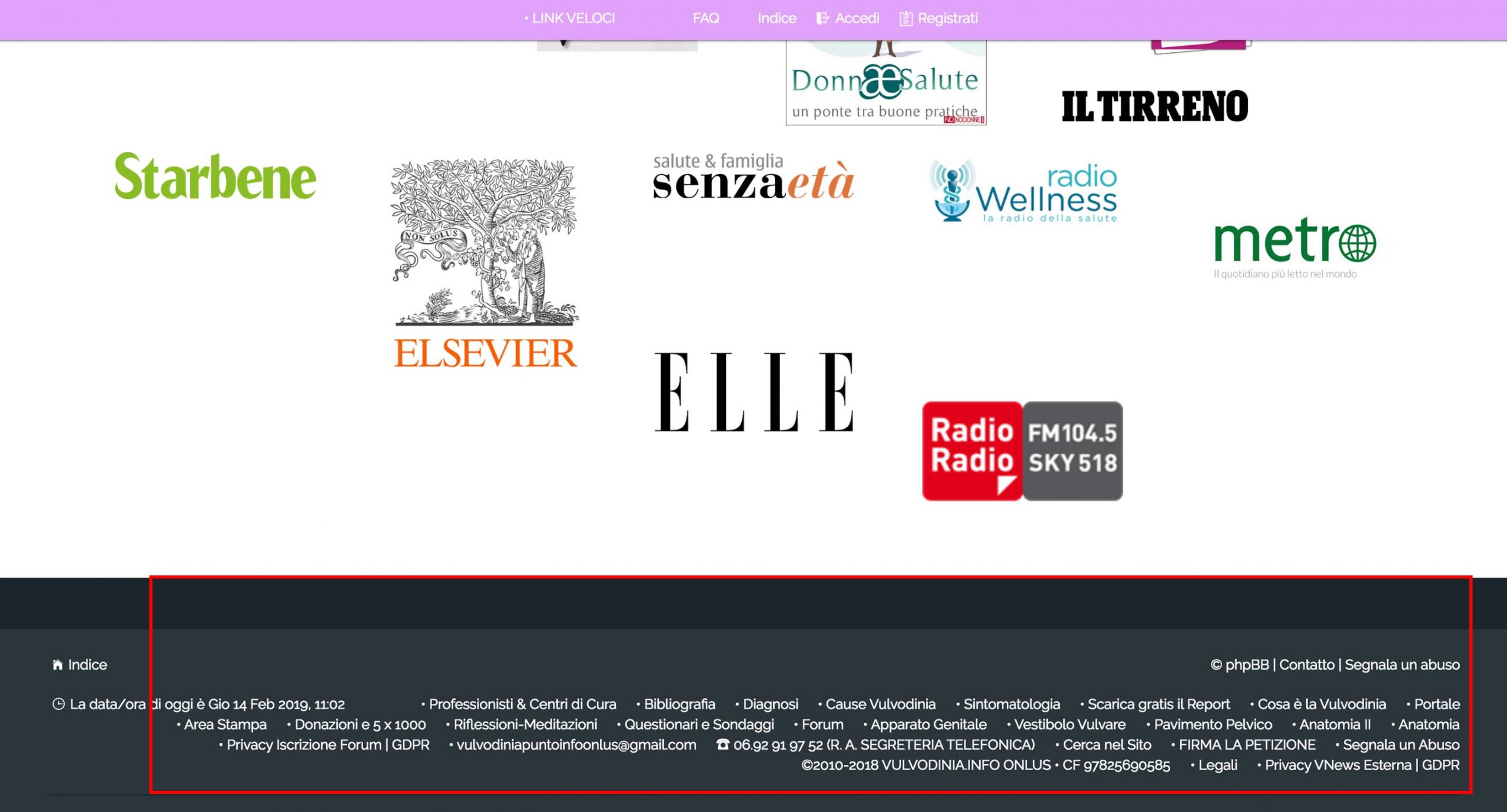
Navigation is placed in the middle of the page on the left-hand side and at the bottom of the page.
#17: Vincere Insieme La Vulvodinia (Italian Website)
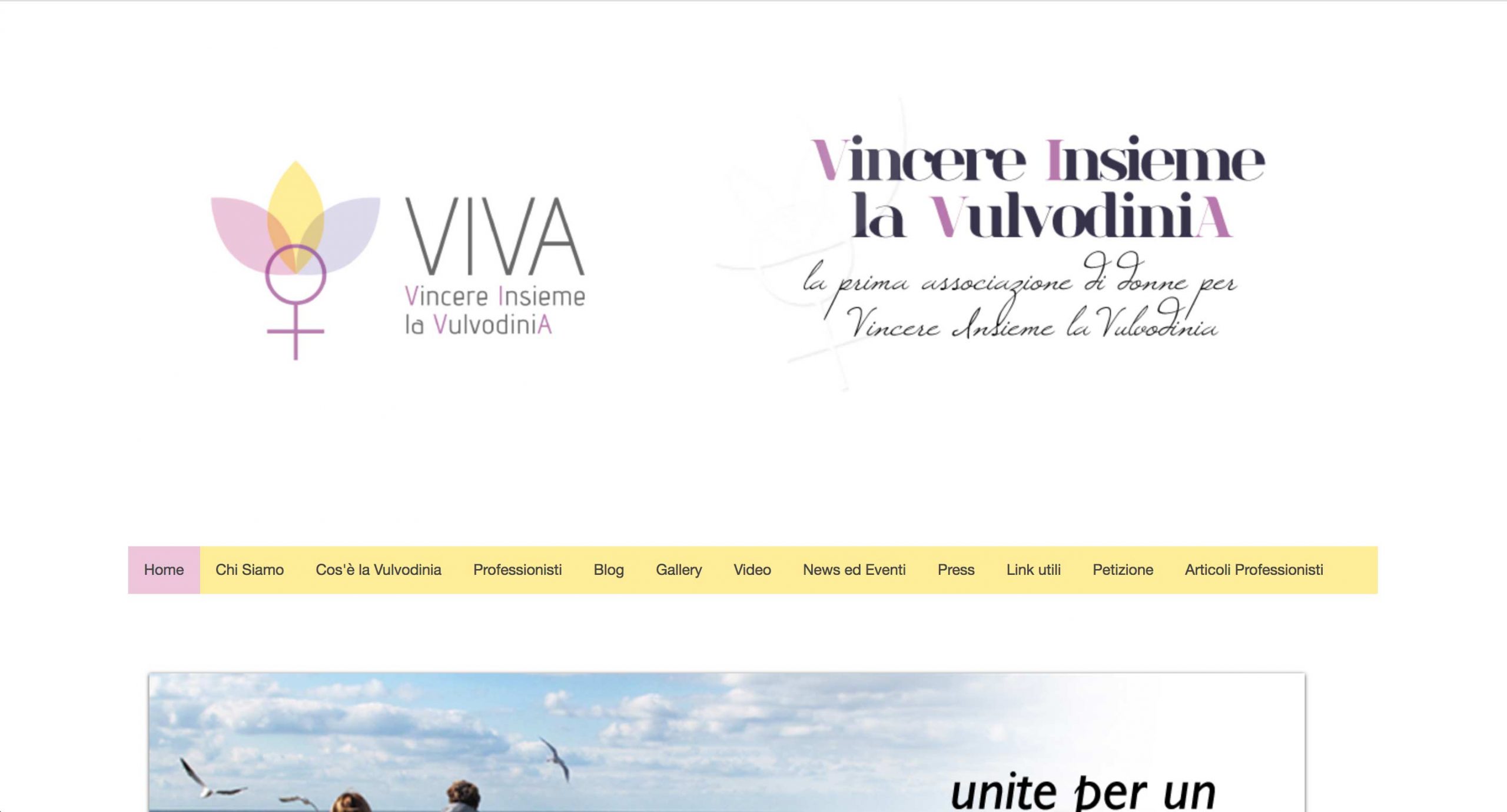
VIVA is a non-profit Italian association formed by women suffering from vulvodynia.
Vulvodynia related information is minimal, including, as usual, causes, symptoms, diagnosis, treatments, and self-help tips.
One valuable resource is the list of Italian doctors dealing with vulvodynia, along with links to vulvodynia related articles that have appeared in the Italian press.
It seems that the website has not been updated since 2017.
#18: Vulvodynia.pl (Polish Website)
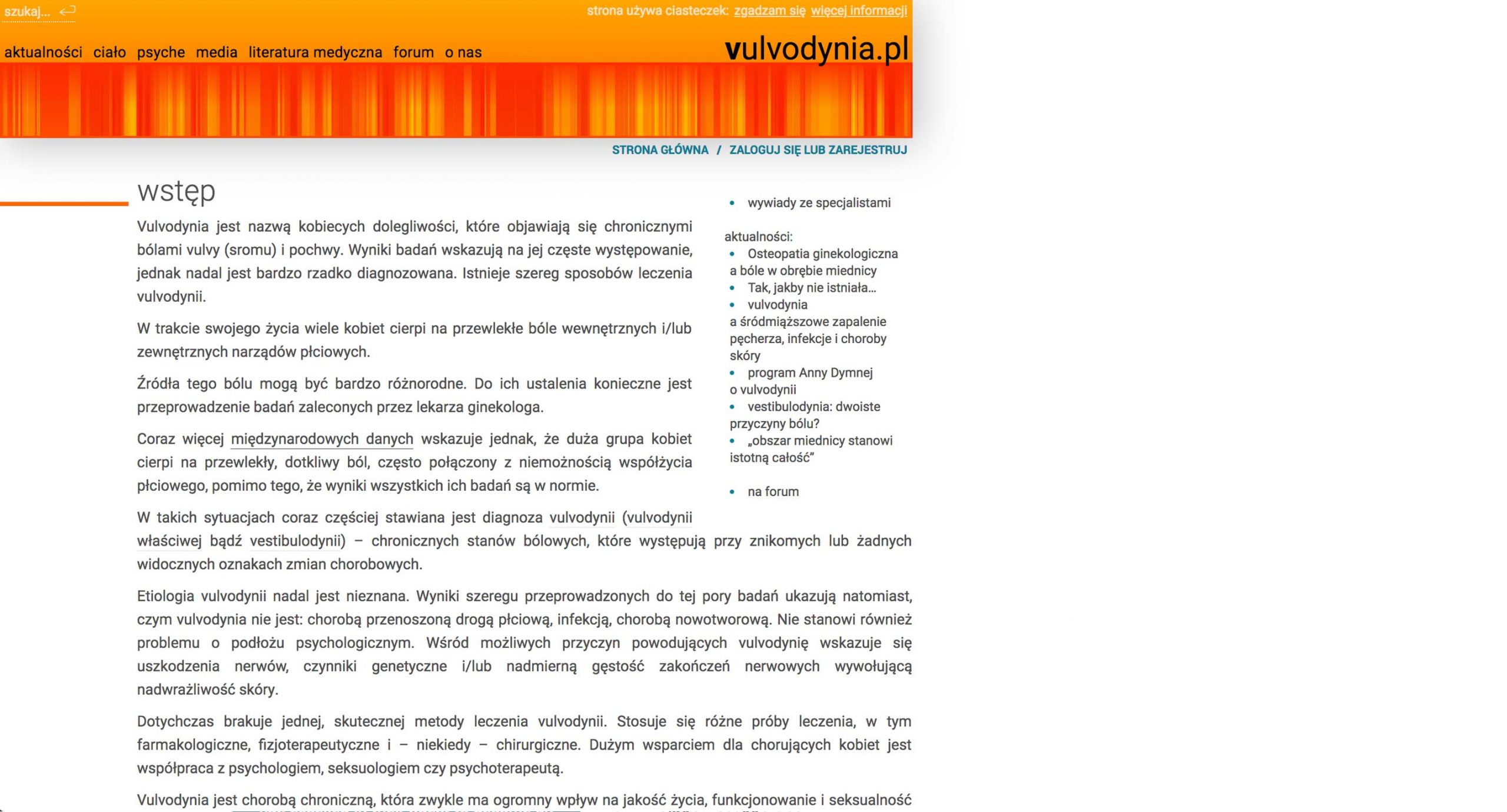
The website was created by two Polish psychotherapists.
Key vulvodynia information is divided into two sections: mind and body.
In the mind part, you can find, amongst other things, details about chronic pain, relationships, and sexuality along with a section for male partners of vulvodynia sufferers.
In the body part, you can read about female body anatomy, plus general information about vulvodynia and vulvar vestibulitis.
Also on the website, you can browse through interviews with multidisciplinary specialists about vulvodynia and access a forum.
#19: Wulwodynia Zapytaj Lekarza (Polish Website)
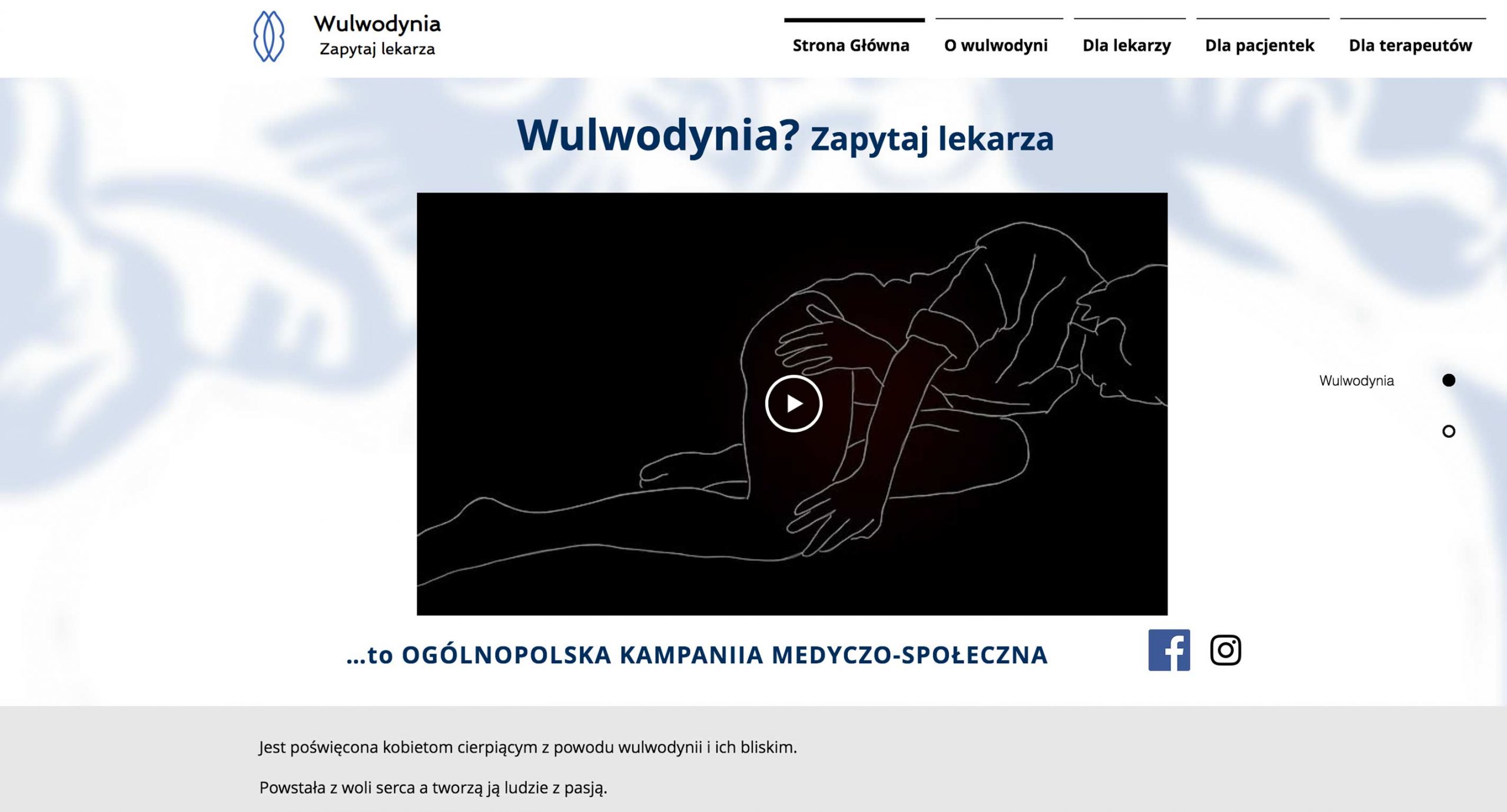
WZL is the National Polish medical and social campaign about vulvodynia. In the patient’s section, you can find general information about vulvodynia, downloadable resources/tips and a list of polish health practitioners dealing with this condition.
#20: Asociación Española de Algias Perineales y Neuralgias Pudendas (Spanish Website)
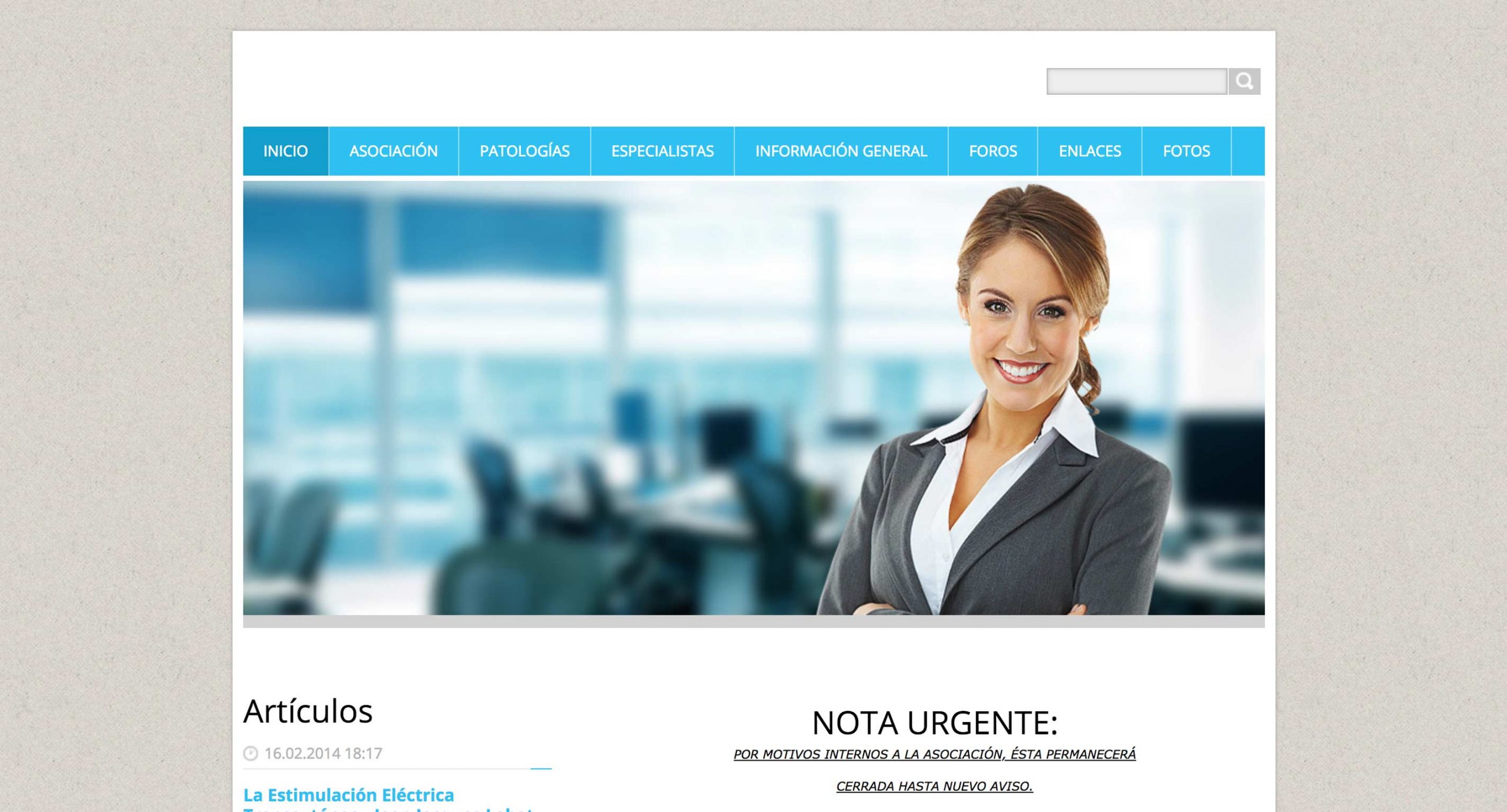
The website is inactive, however, it still contains general information about vulvodynia, vulvar vestibulitis, and a list of health practitioners dealing with these conditions in France and Spain.
Tune into Part 2 coming up next week where I’ll be looking at the remaining vulvodynia related resources like personal blogs, forums, and Facebook groups.
Remember to sign up to Me + My Newsletter to get notified ❤️
Share your thoughts, and questions in the comments below! You can also ask me anything directly on FB.
START YOUR JOURNEY TOWARDS HEALING
Because life’s too short. And you deserve to be healthy + happy.


